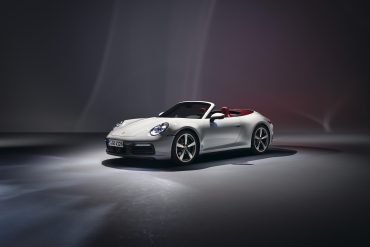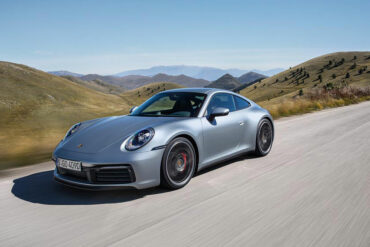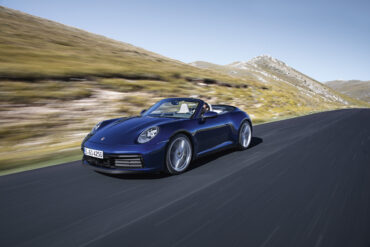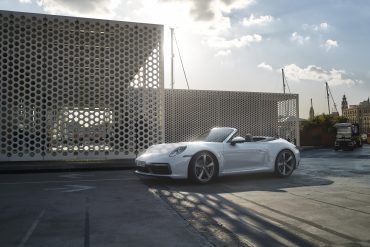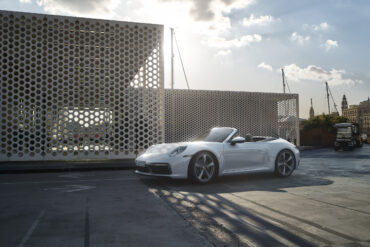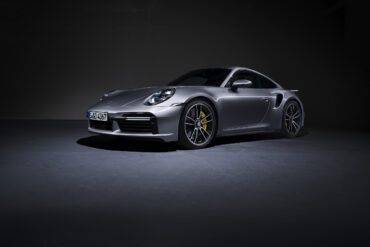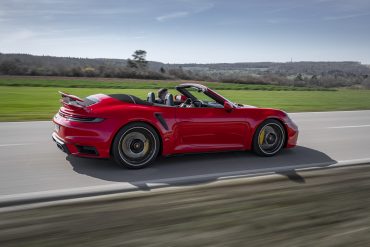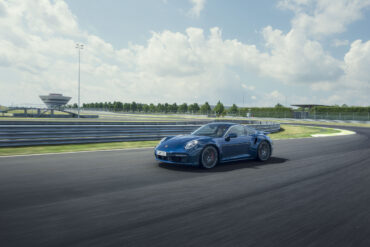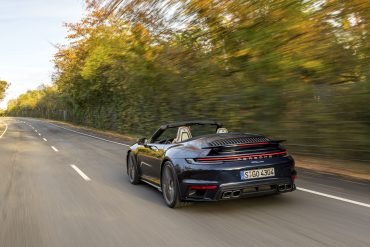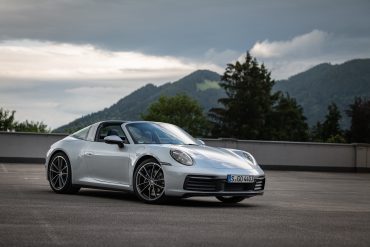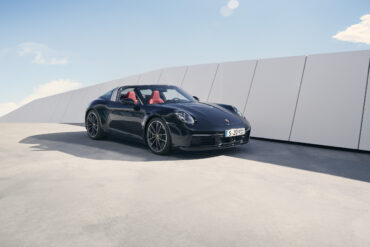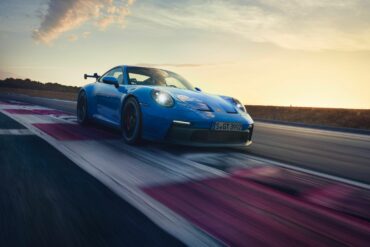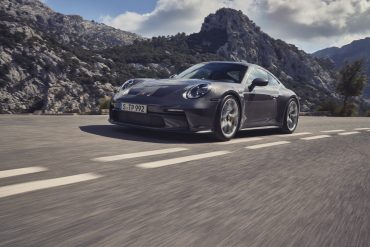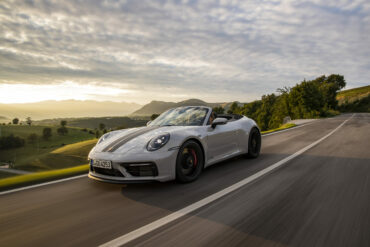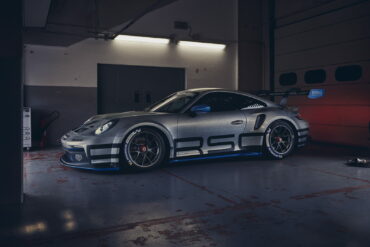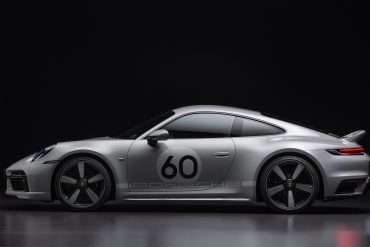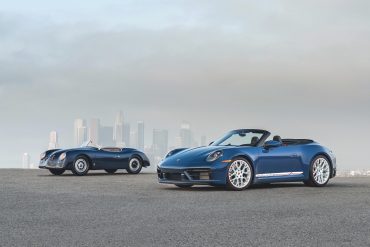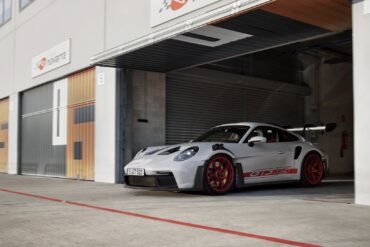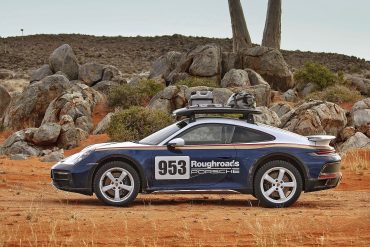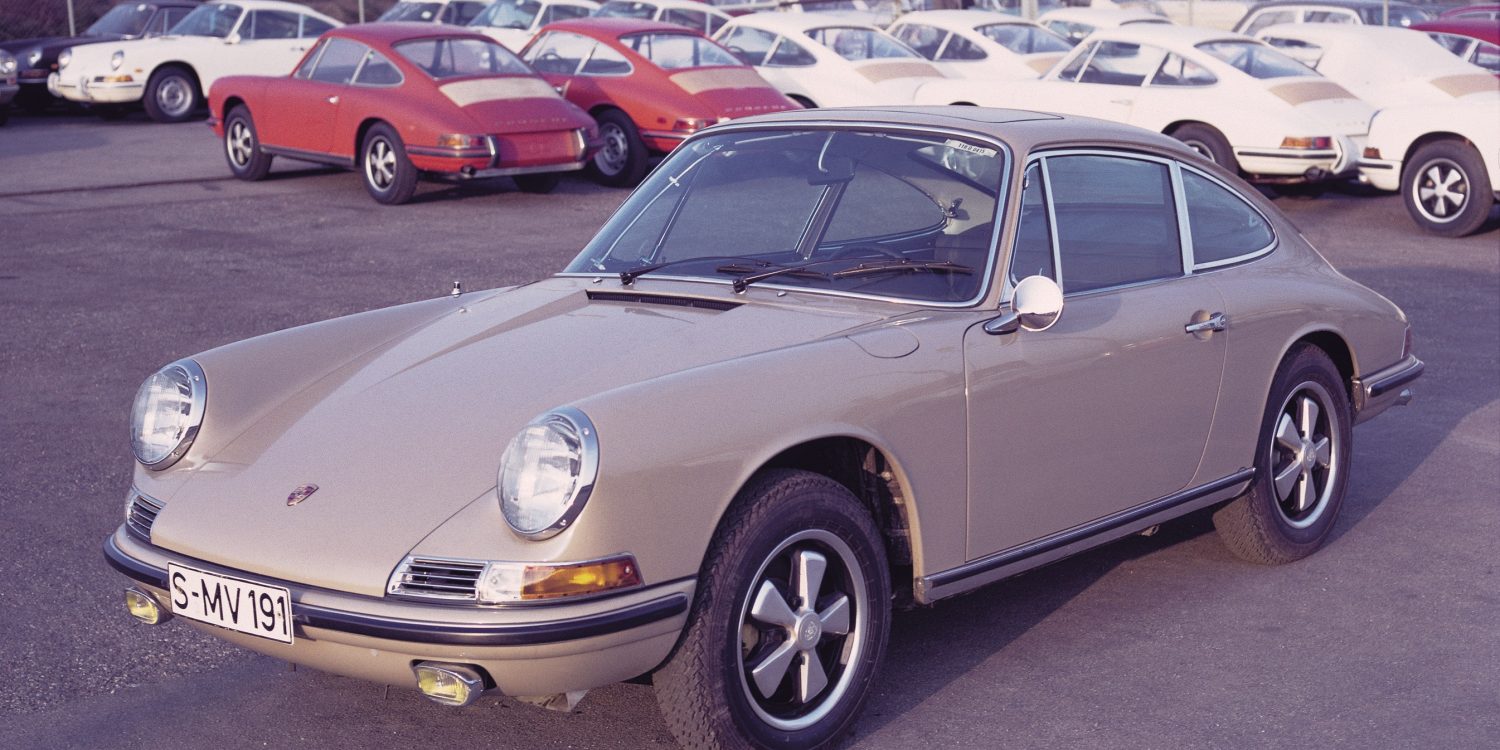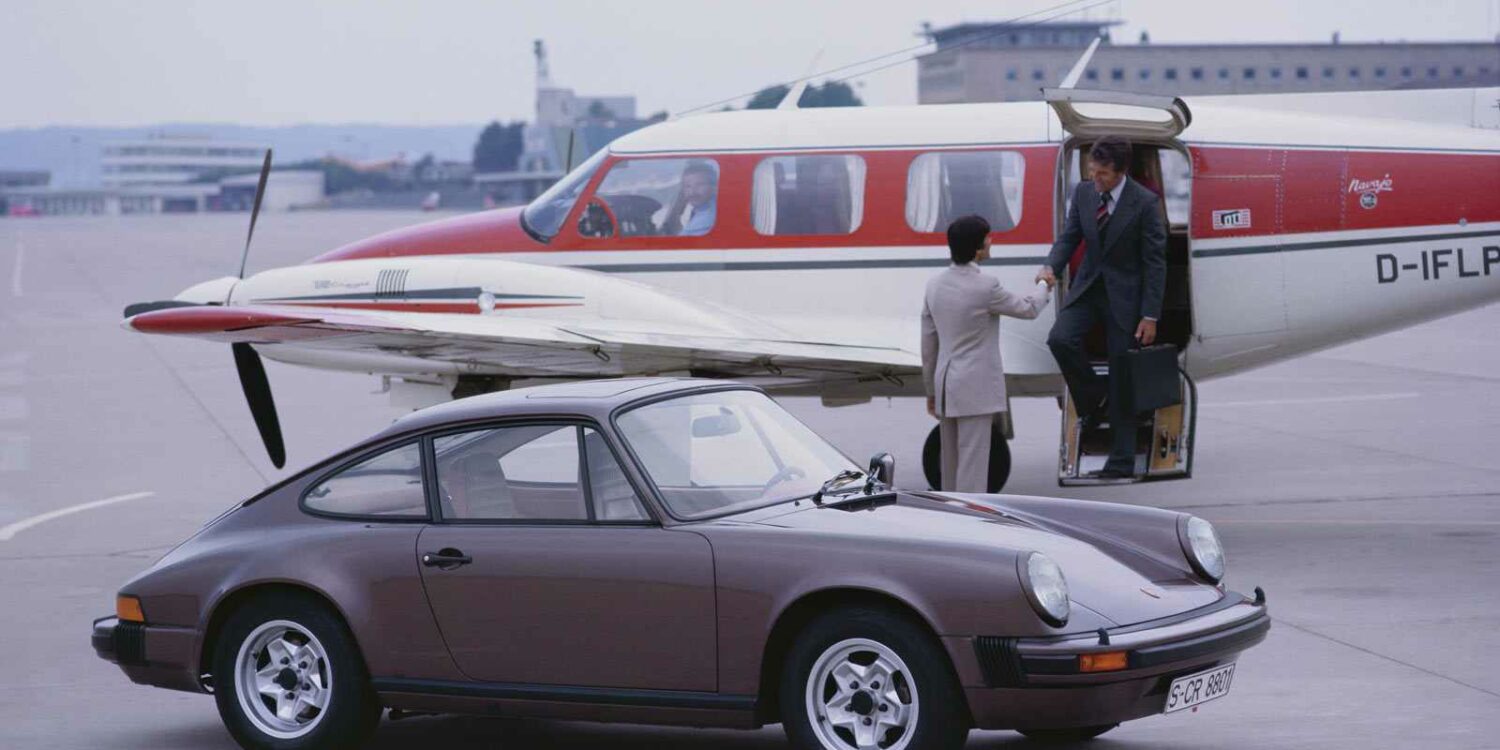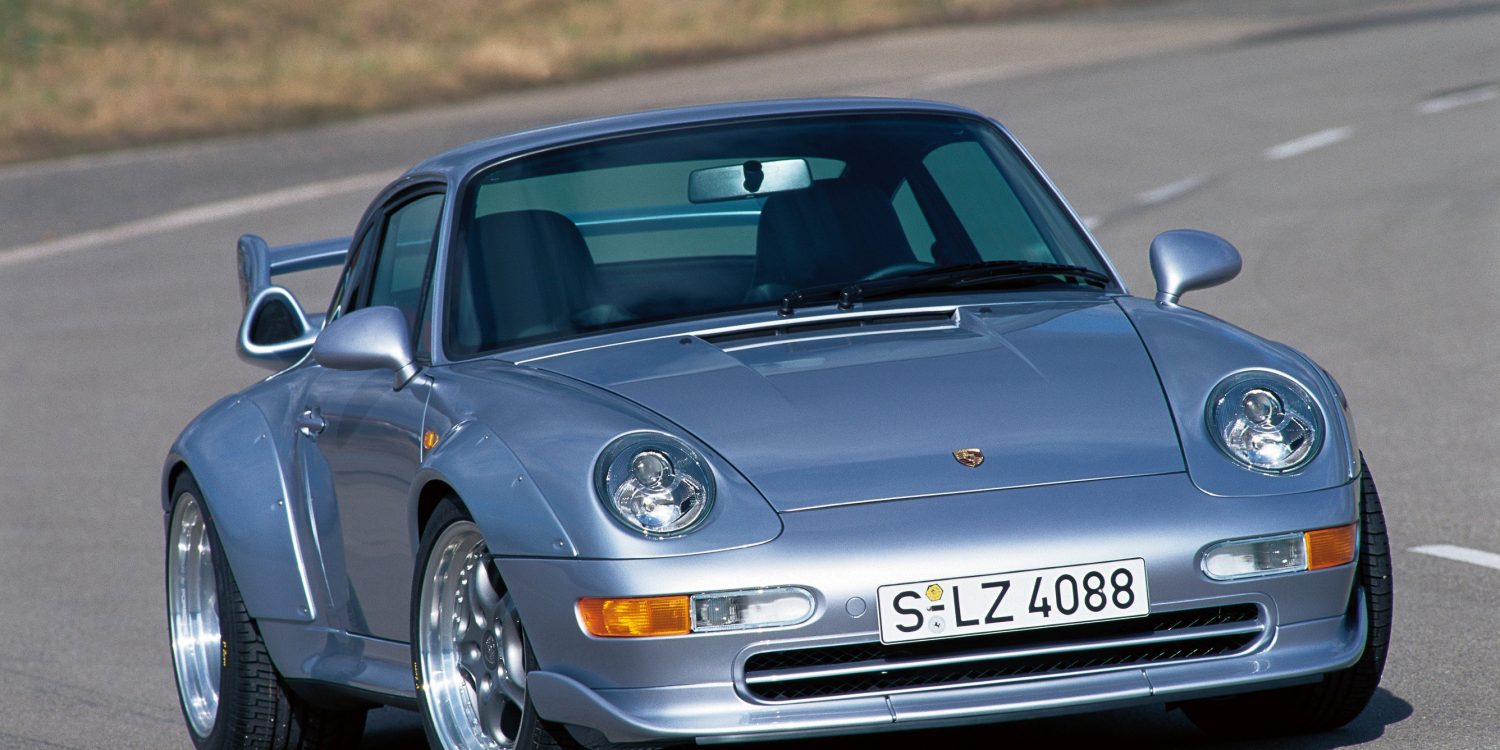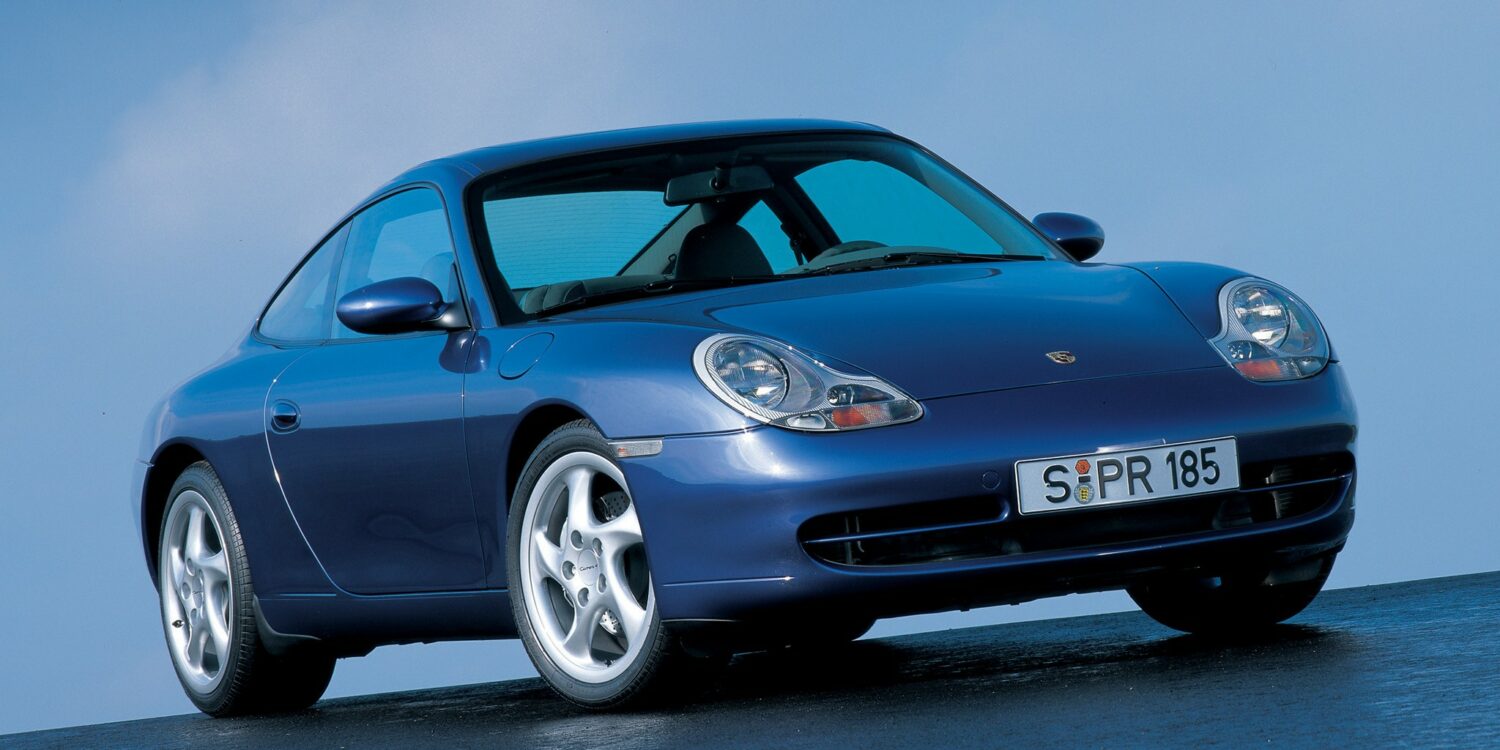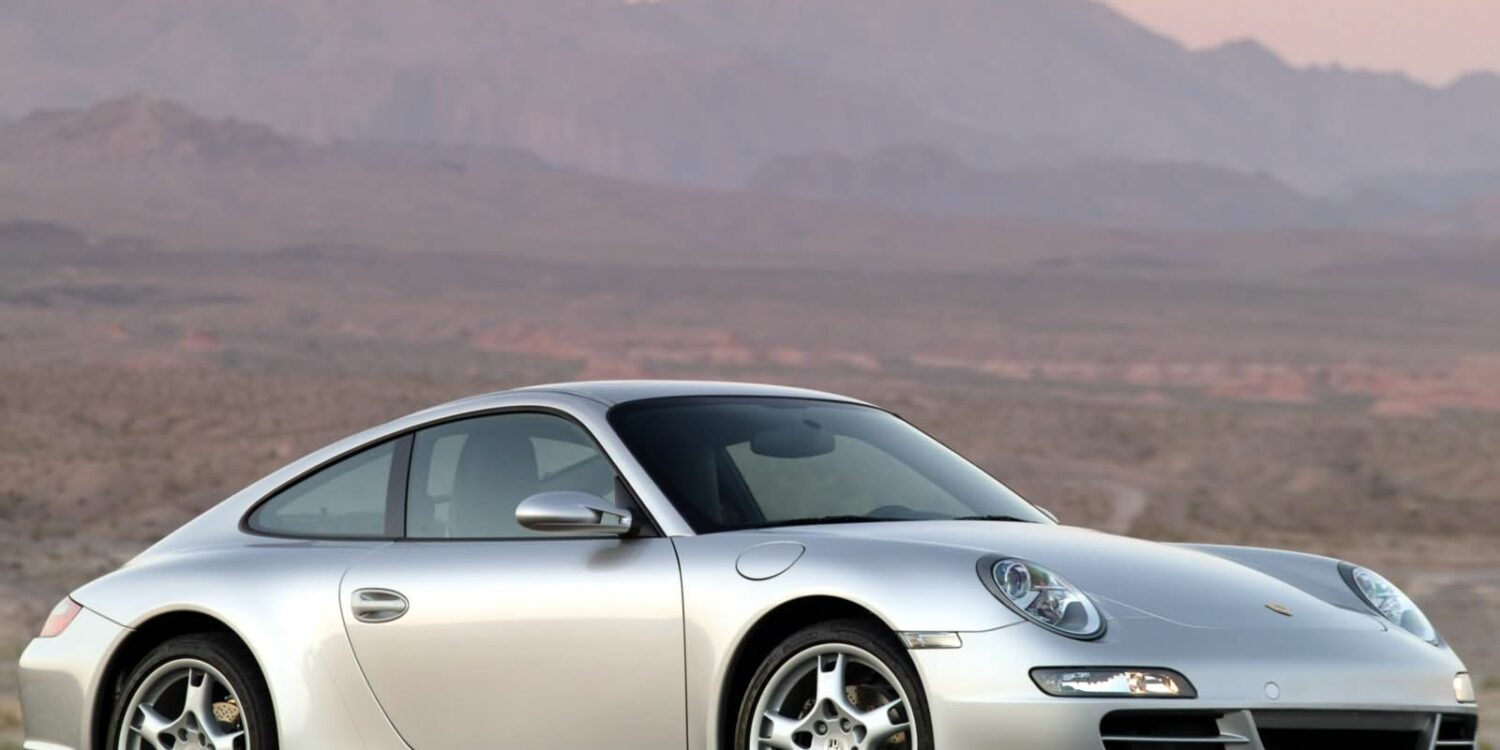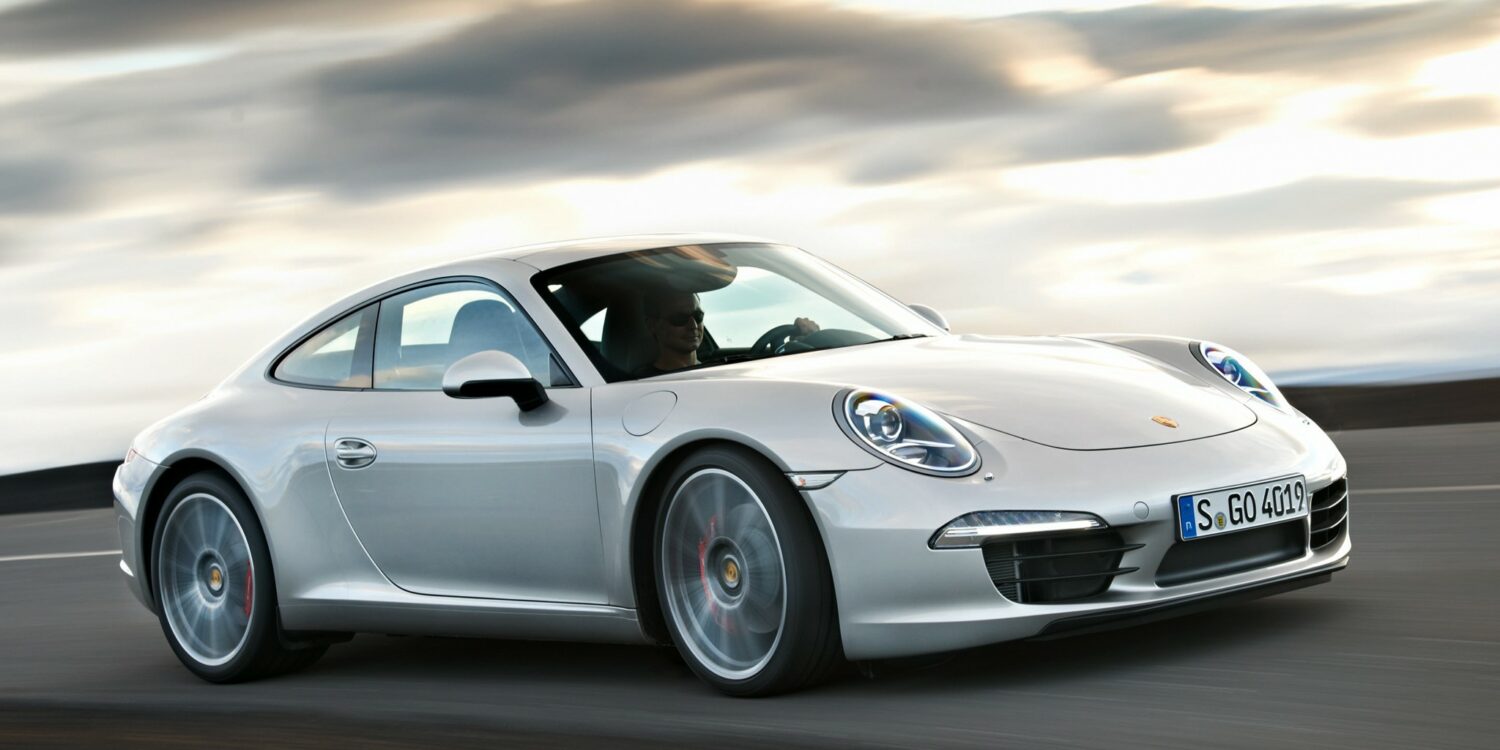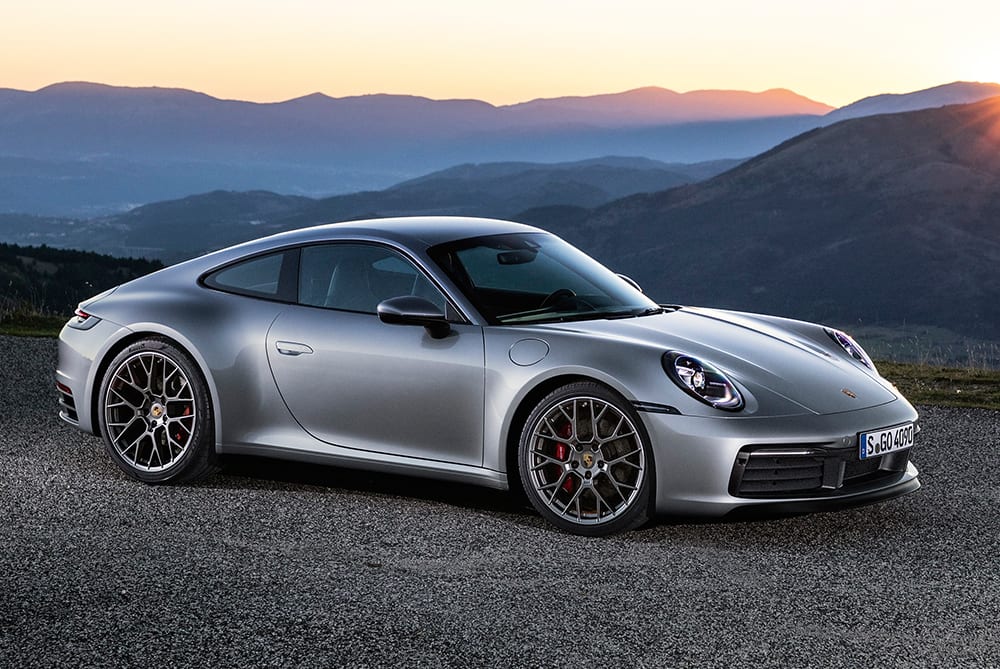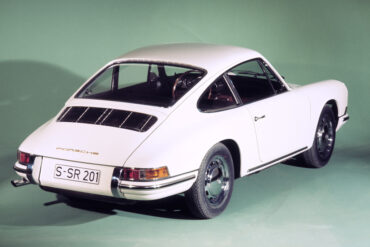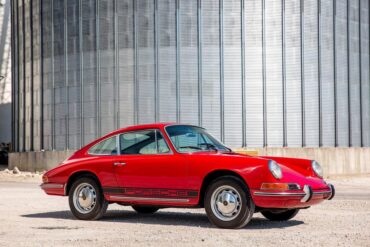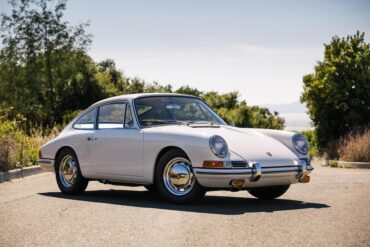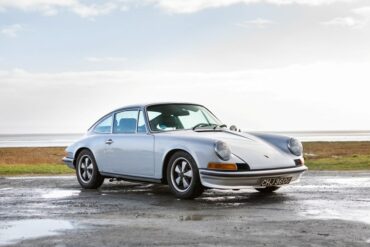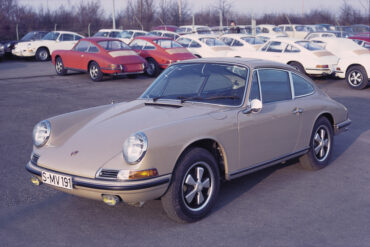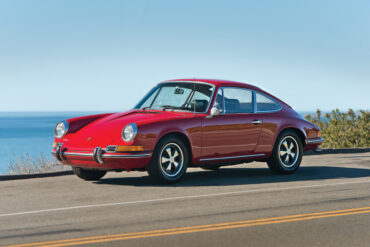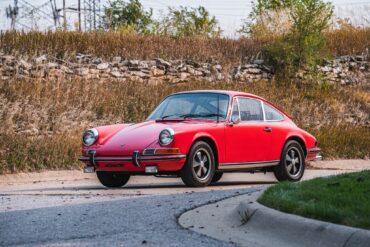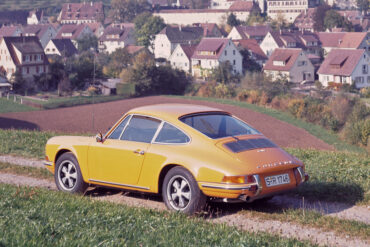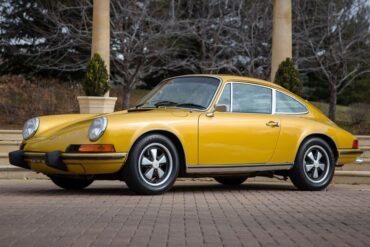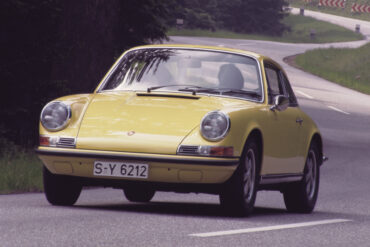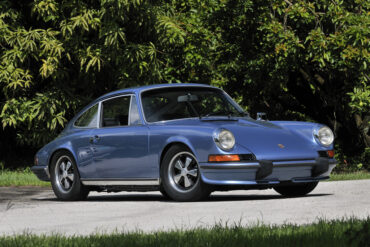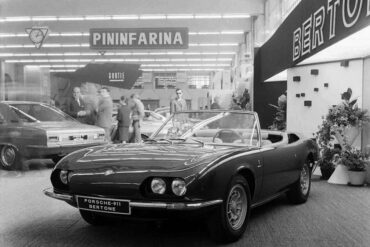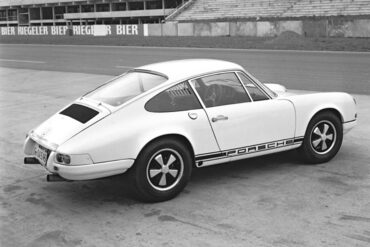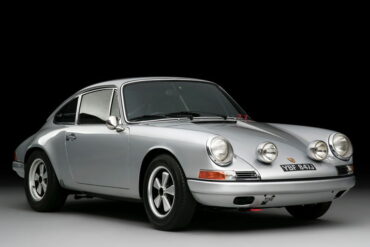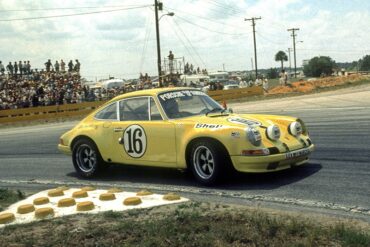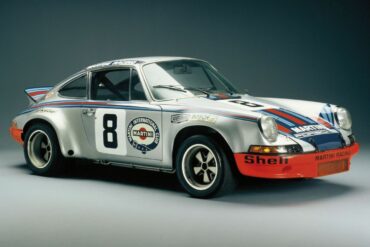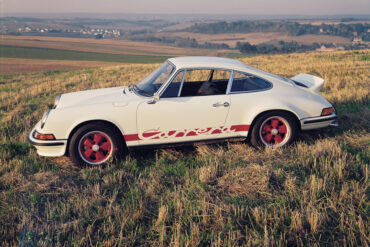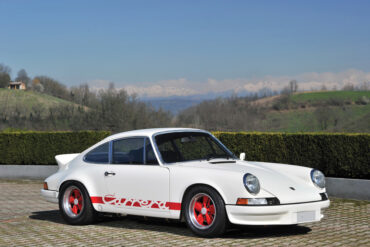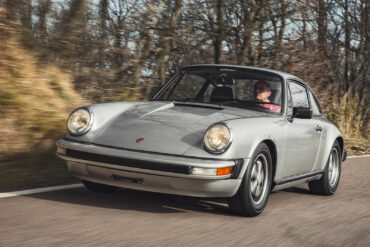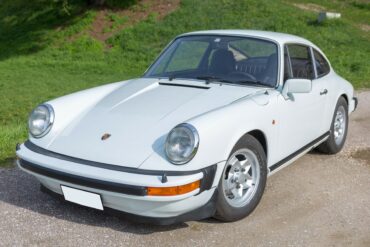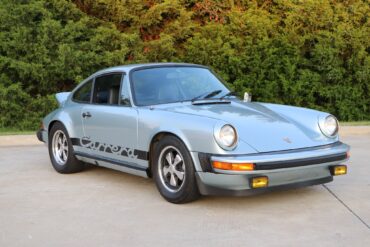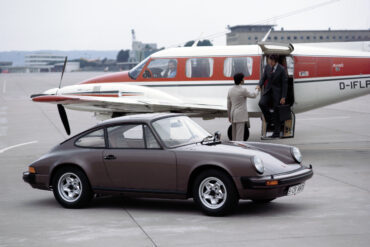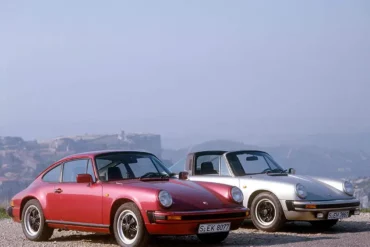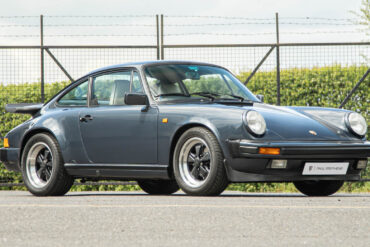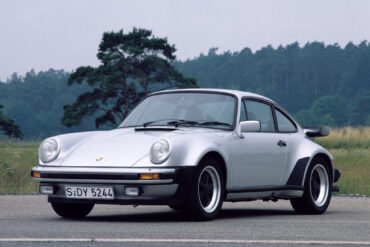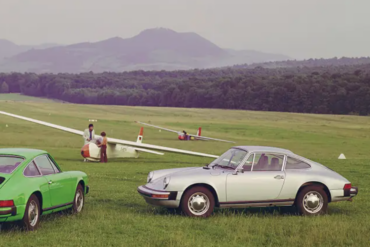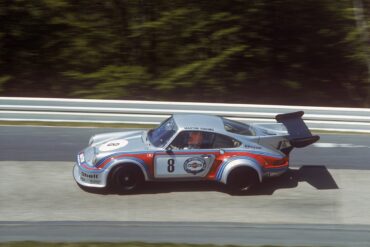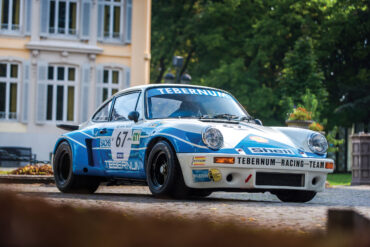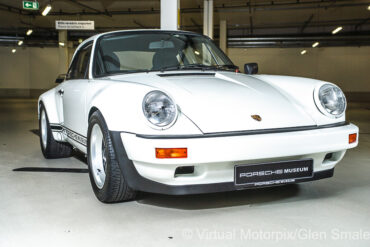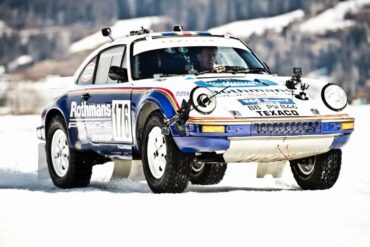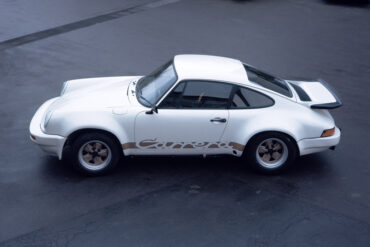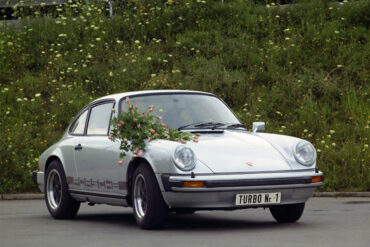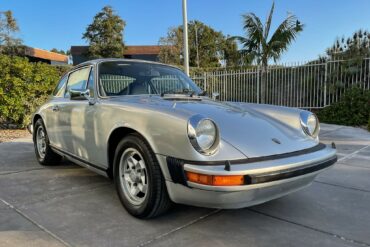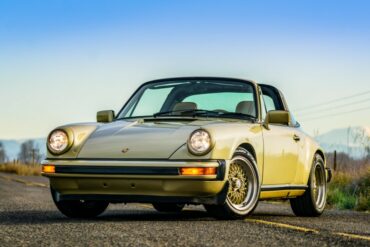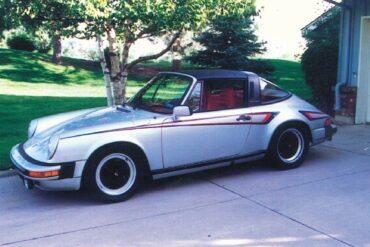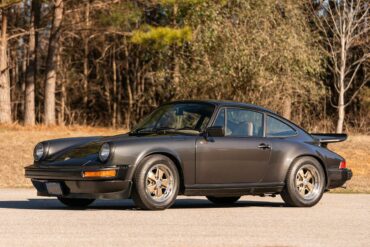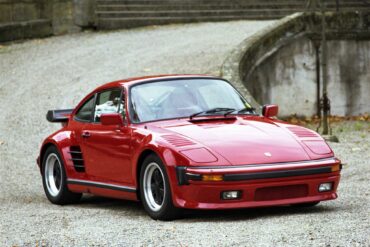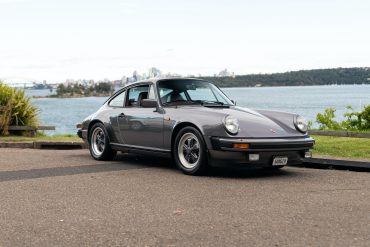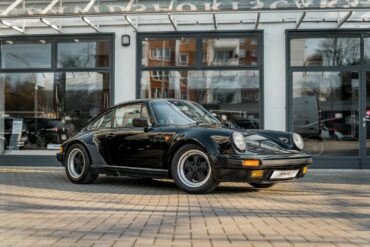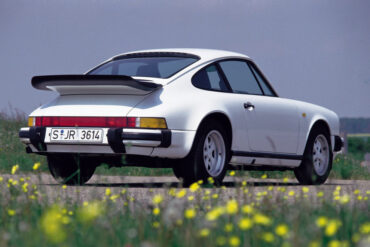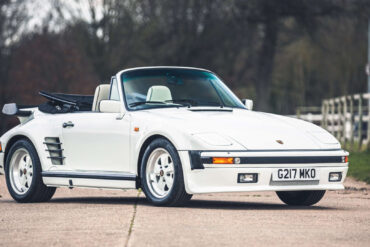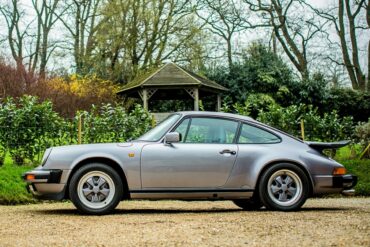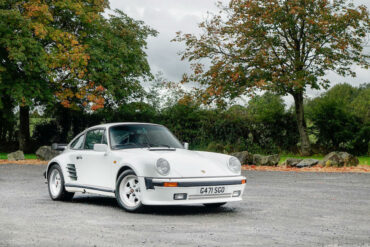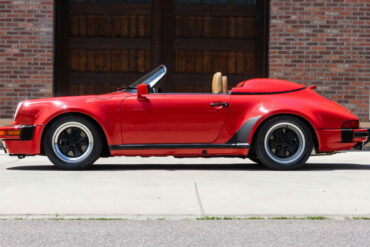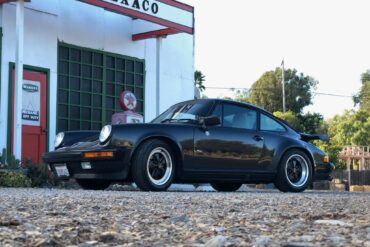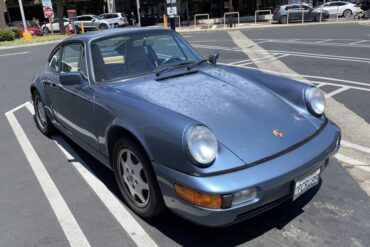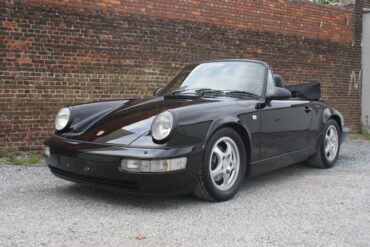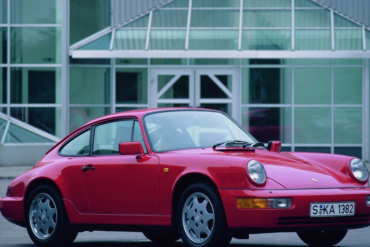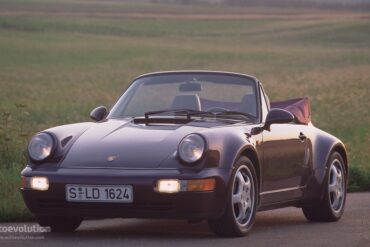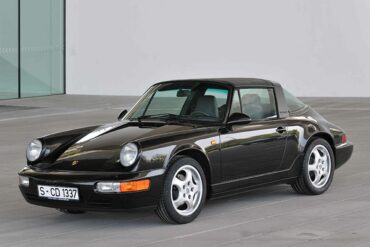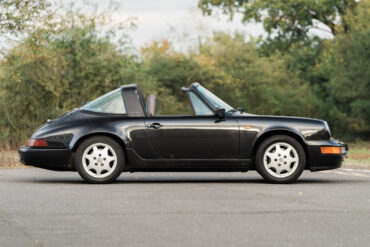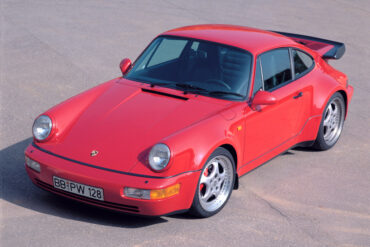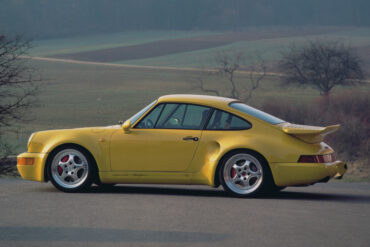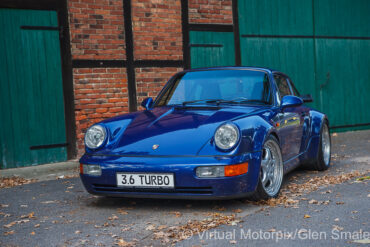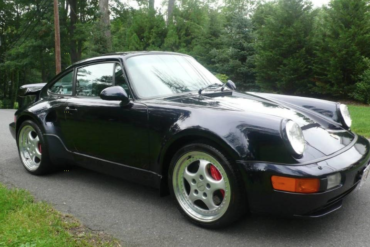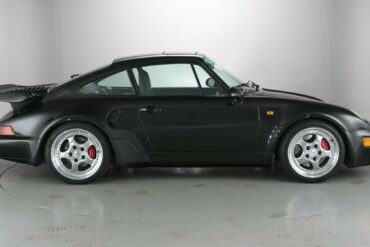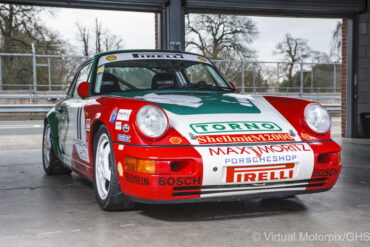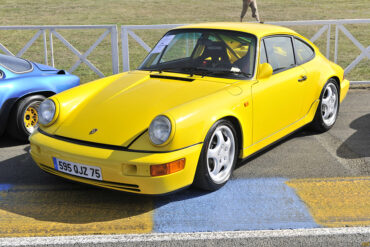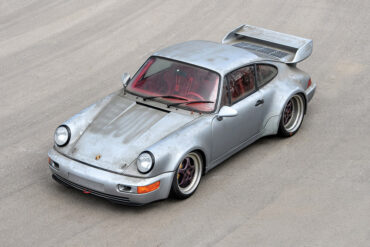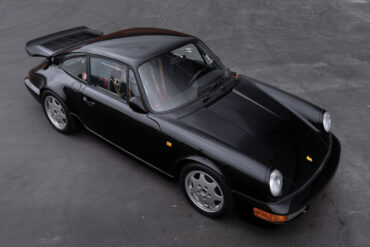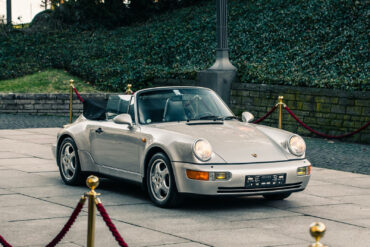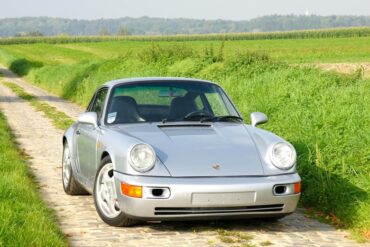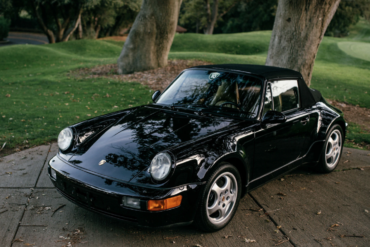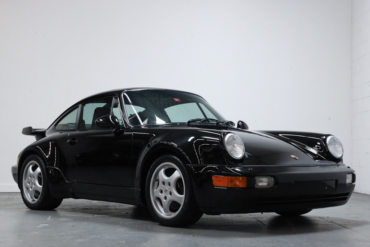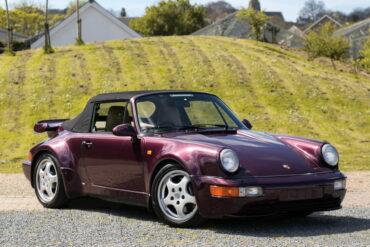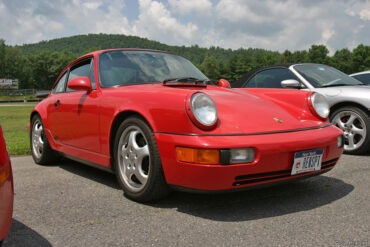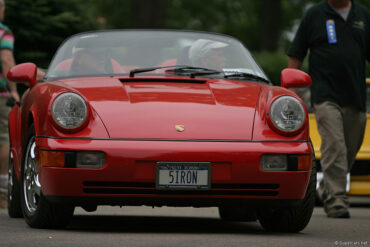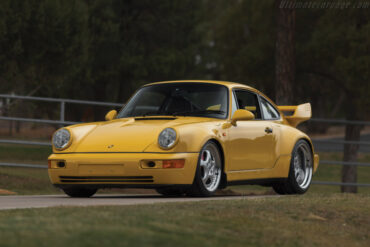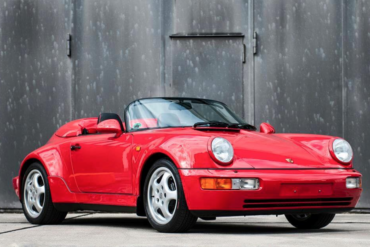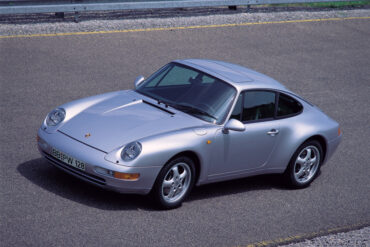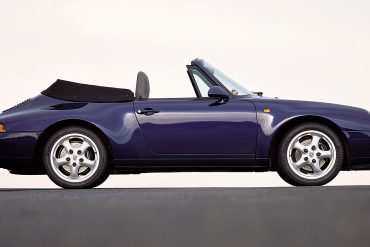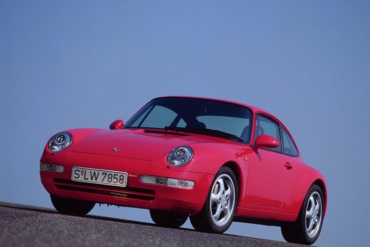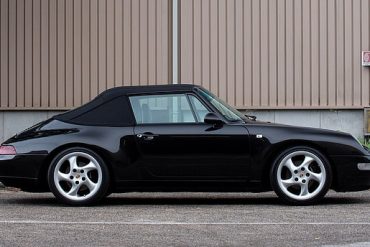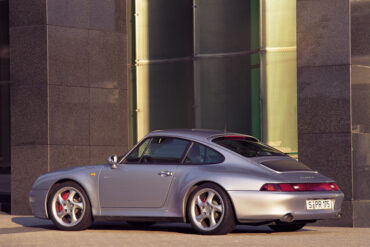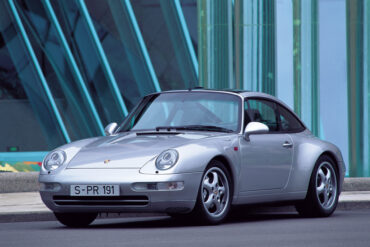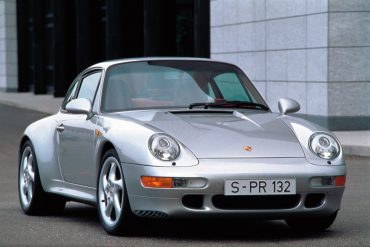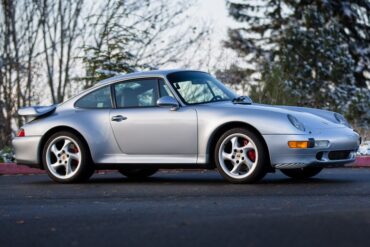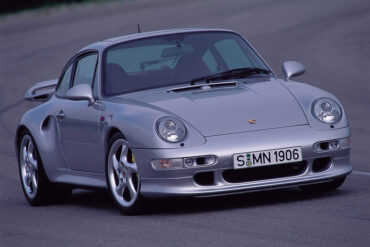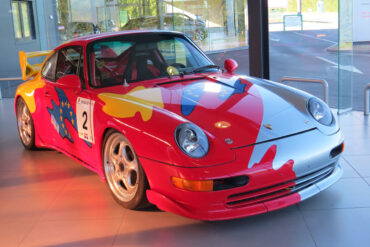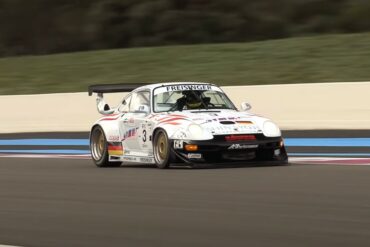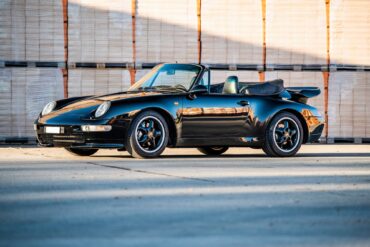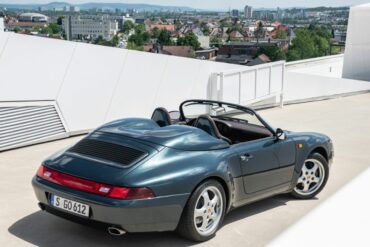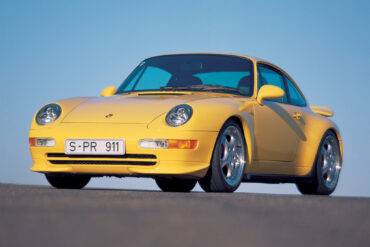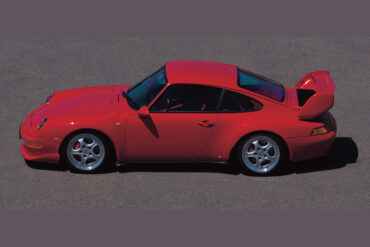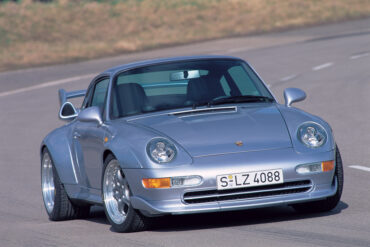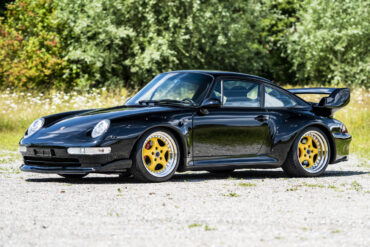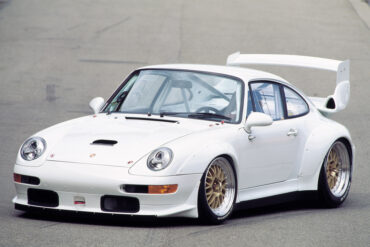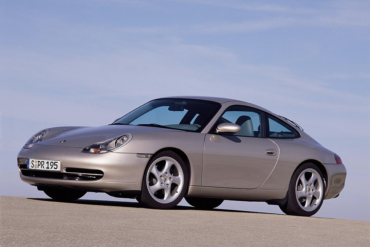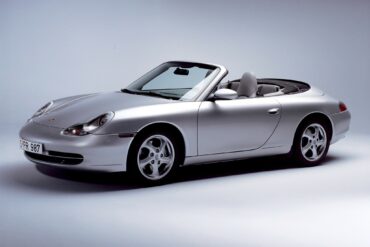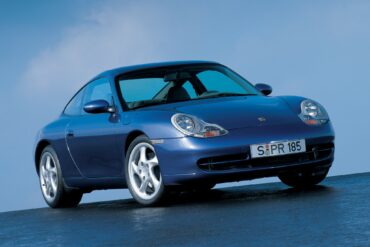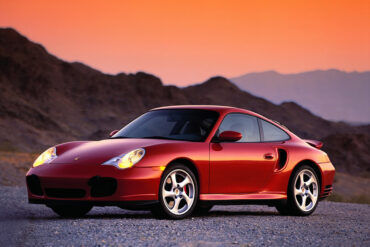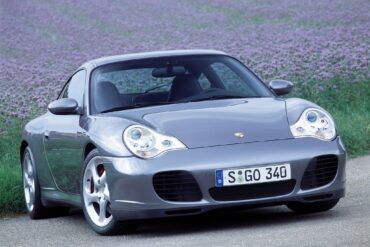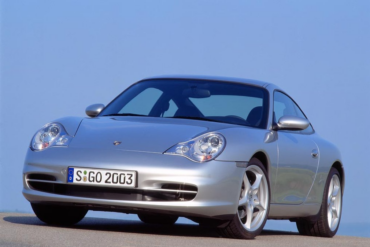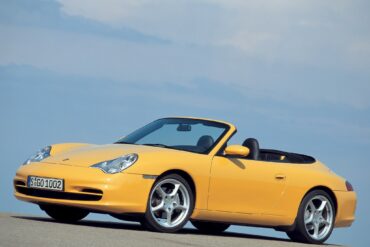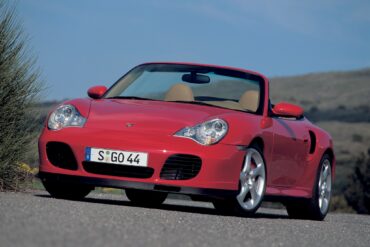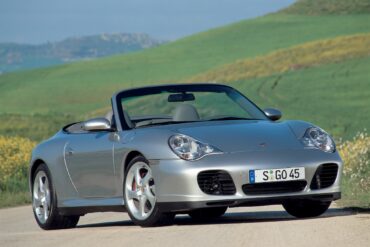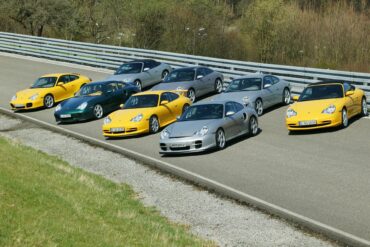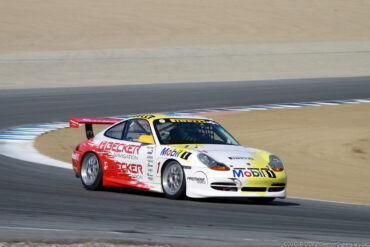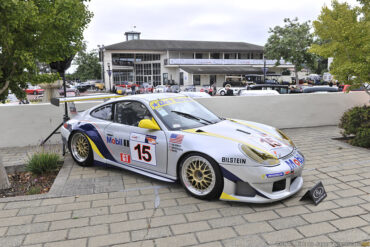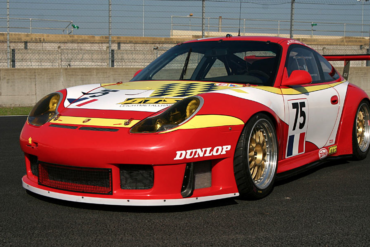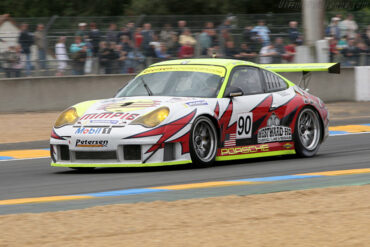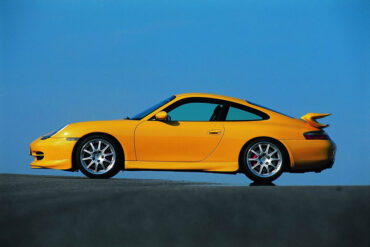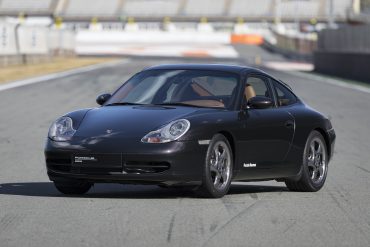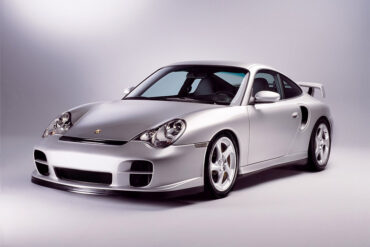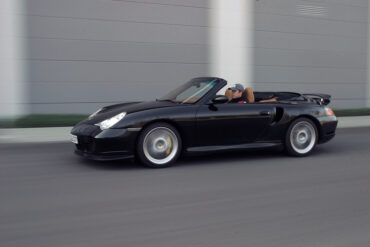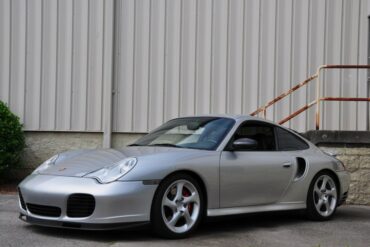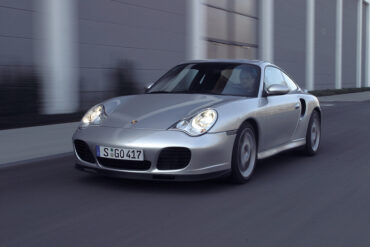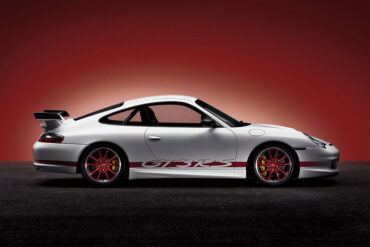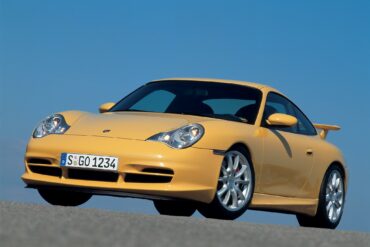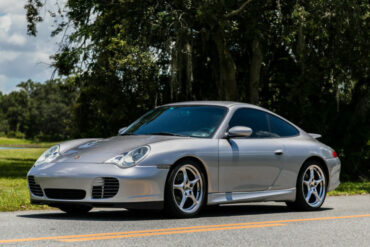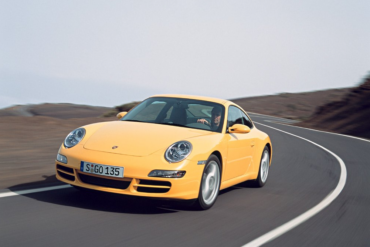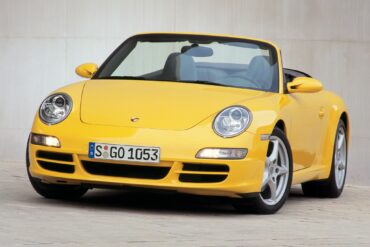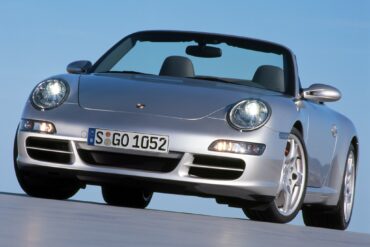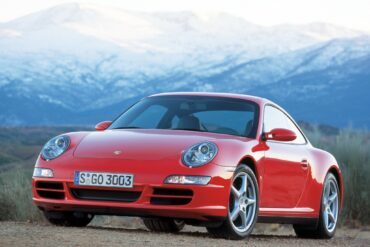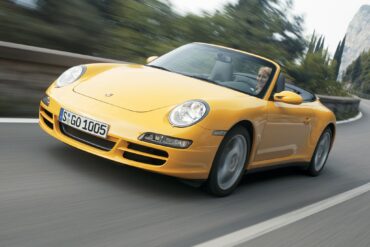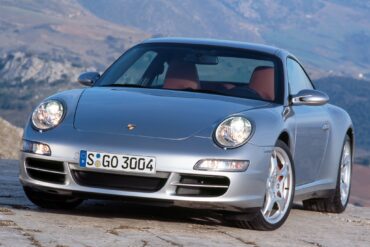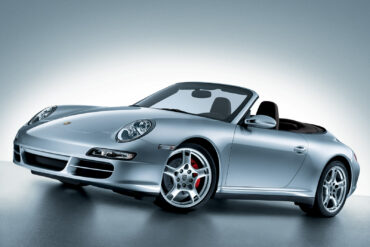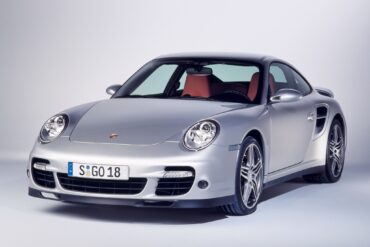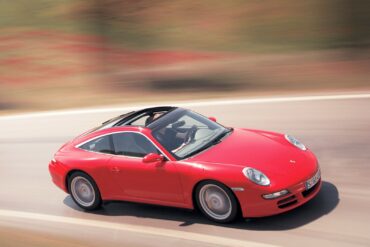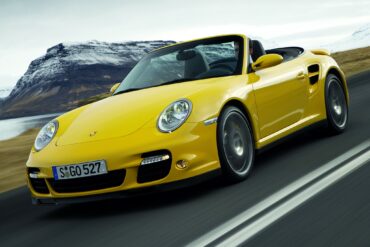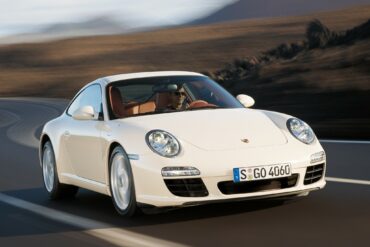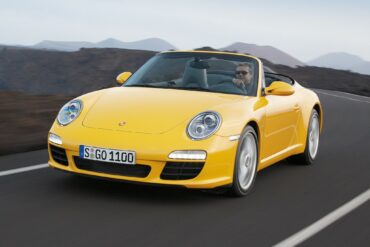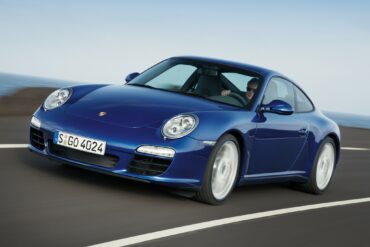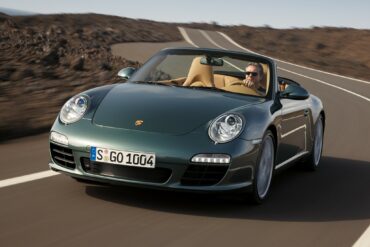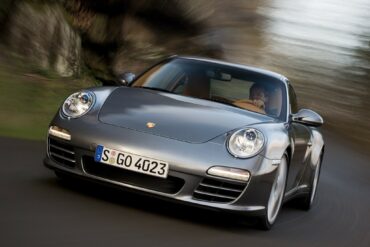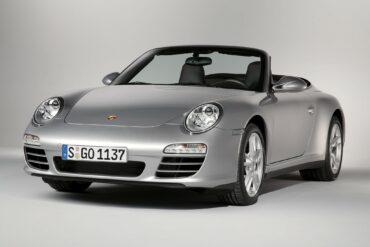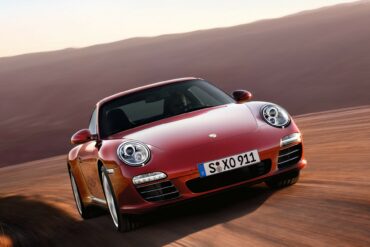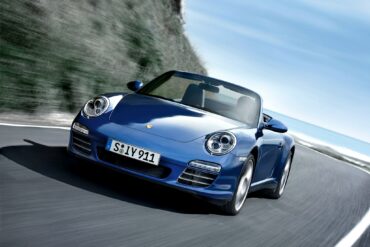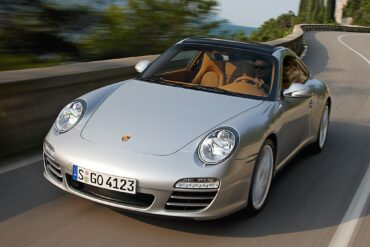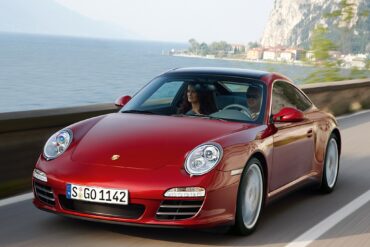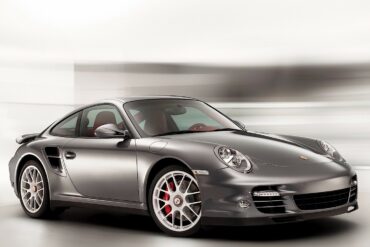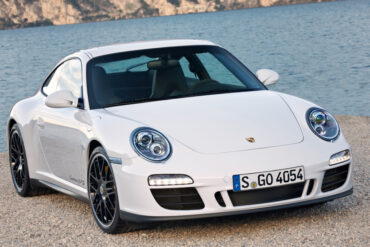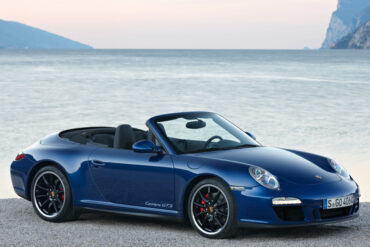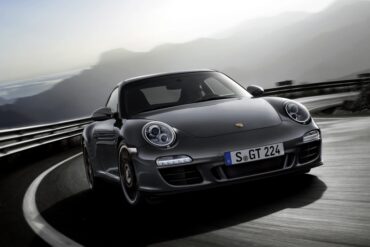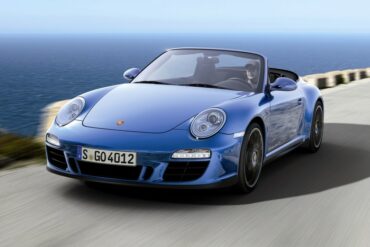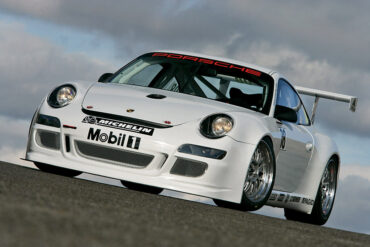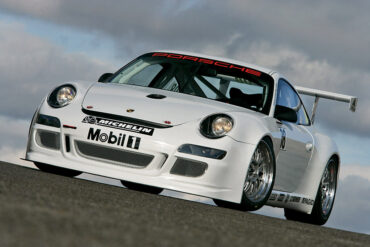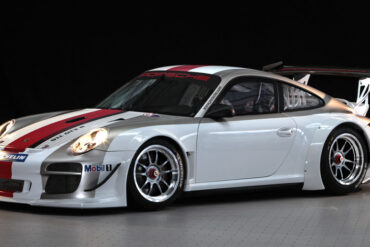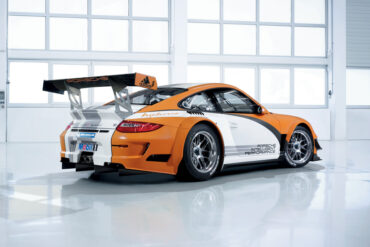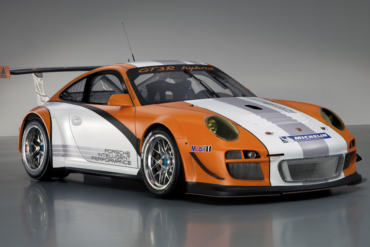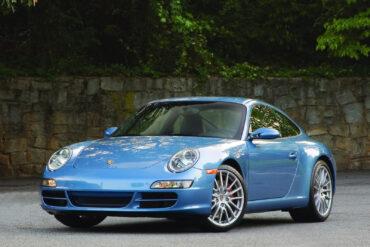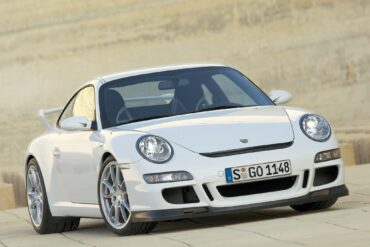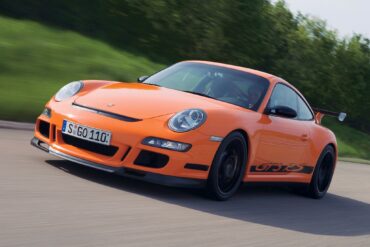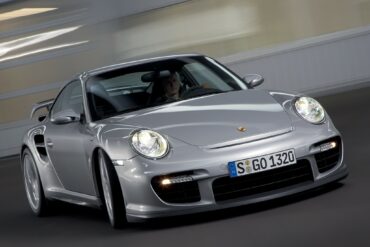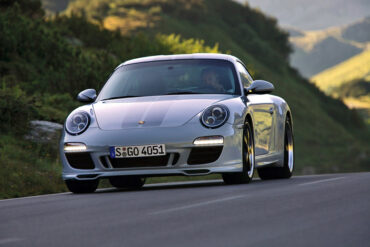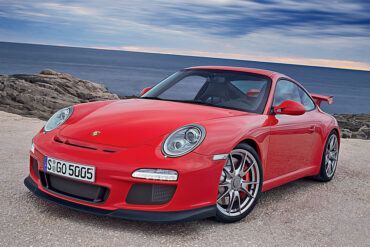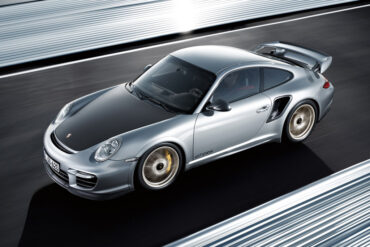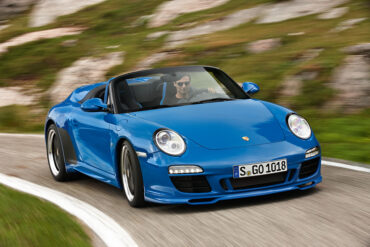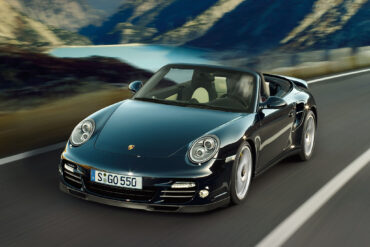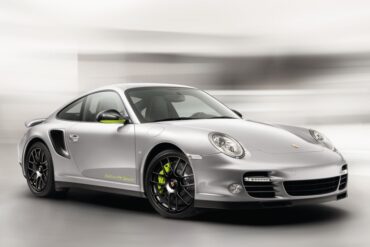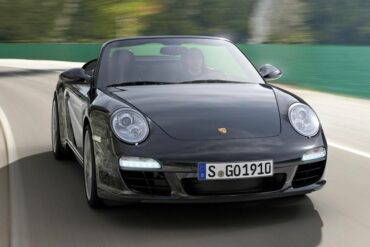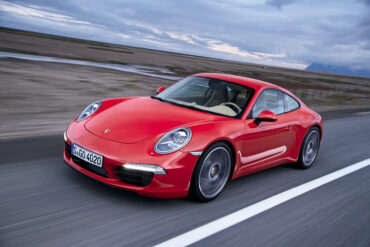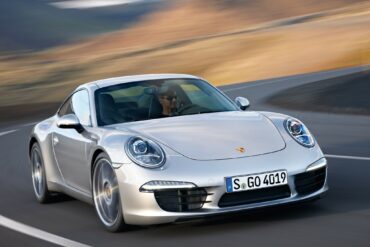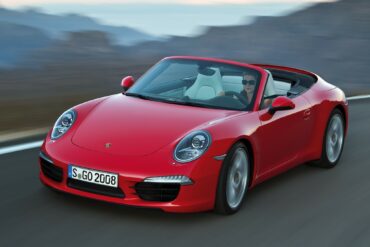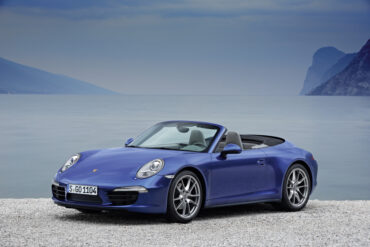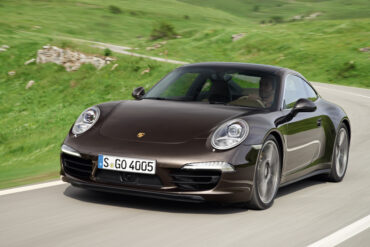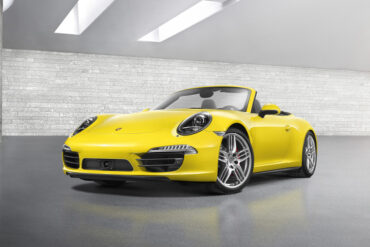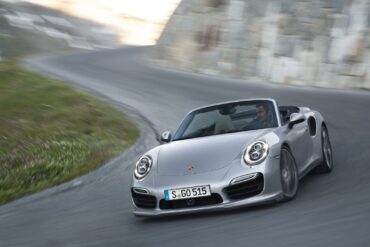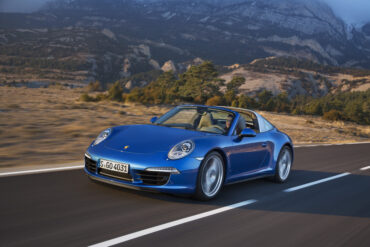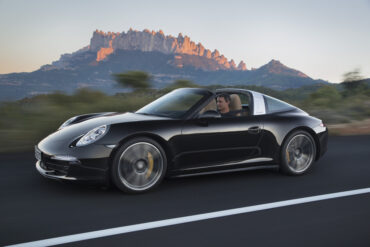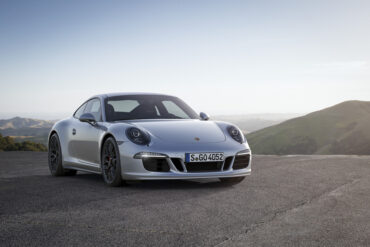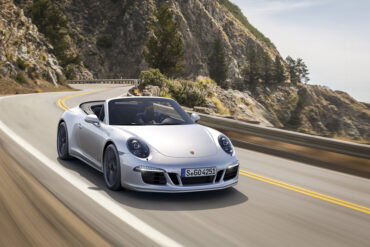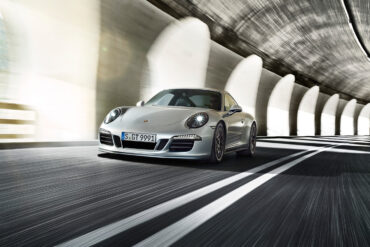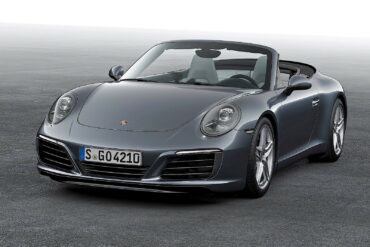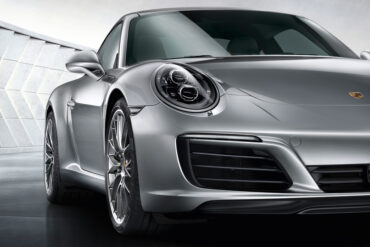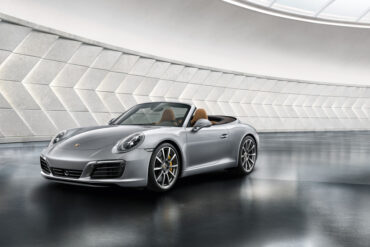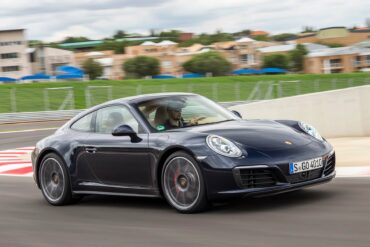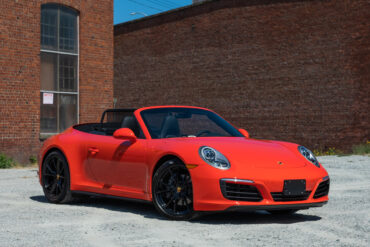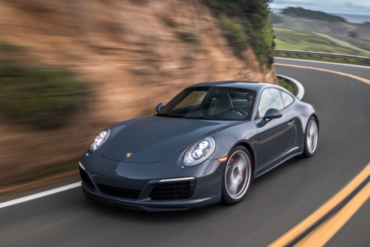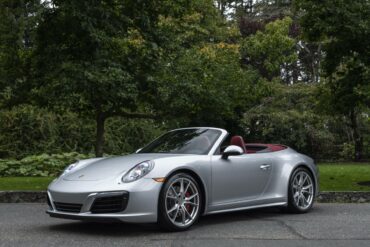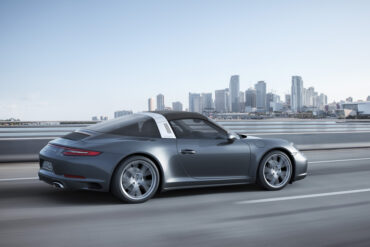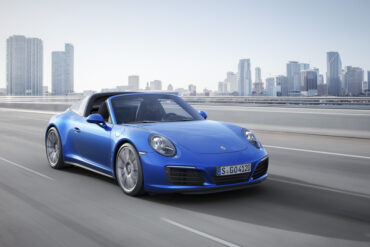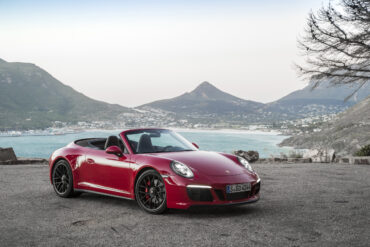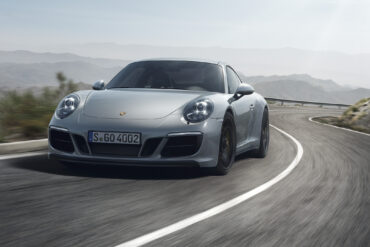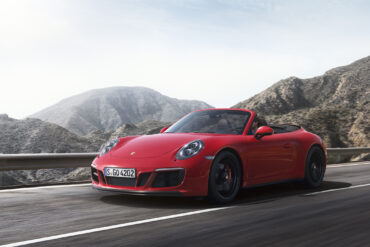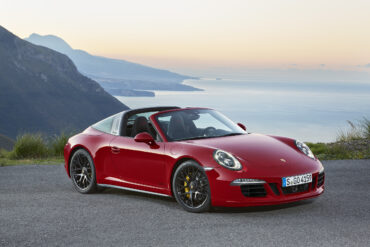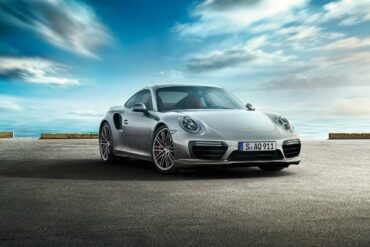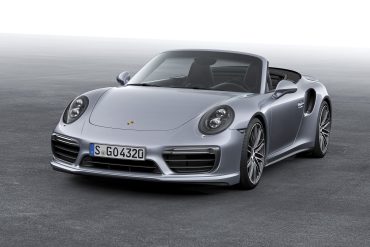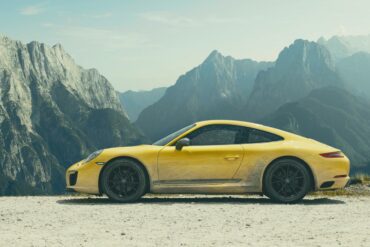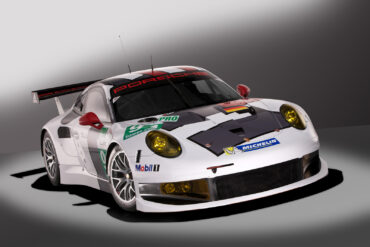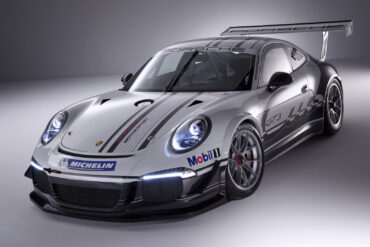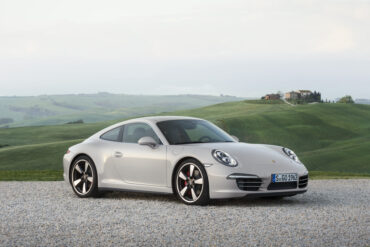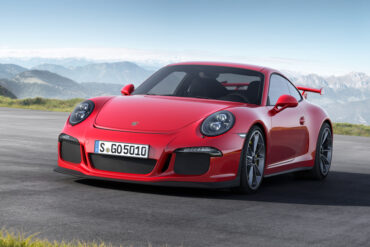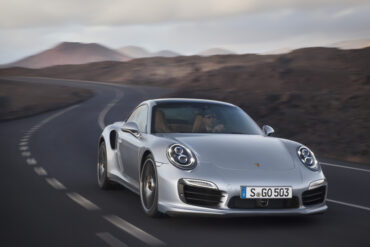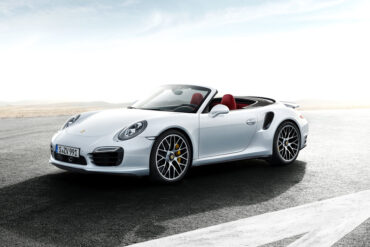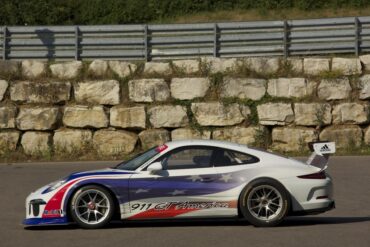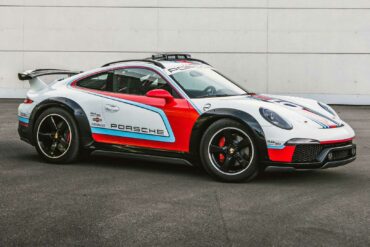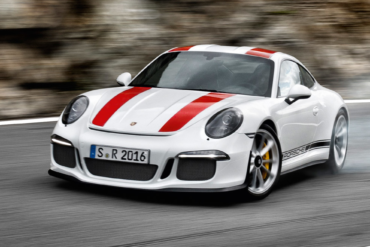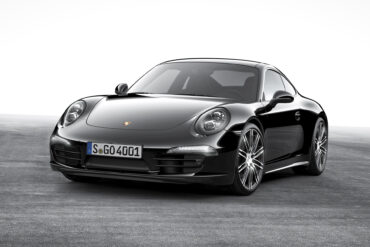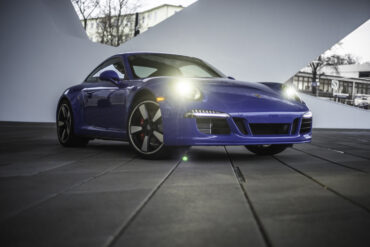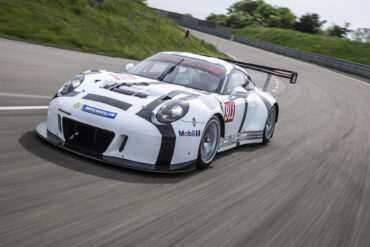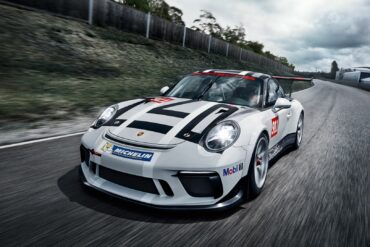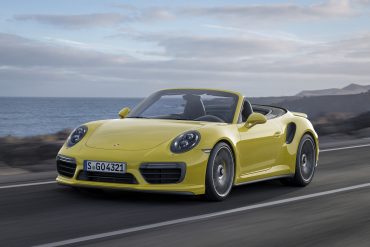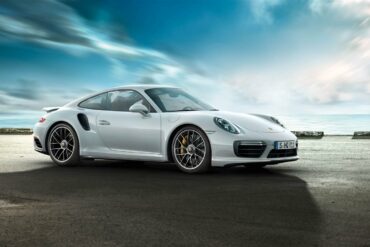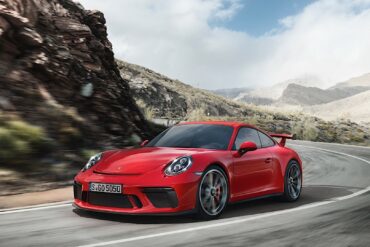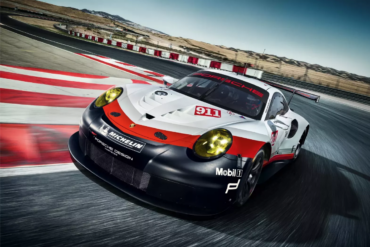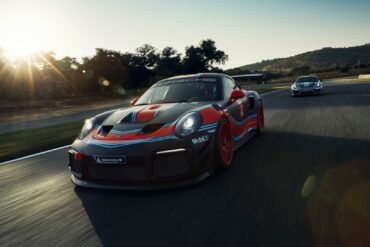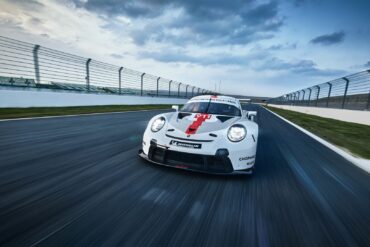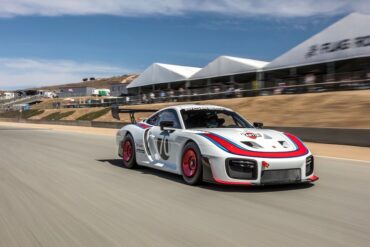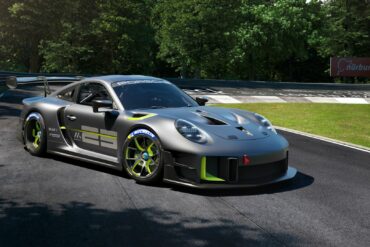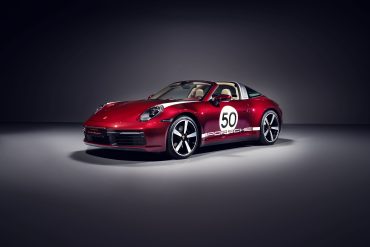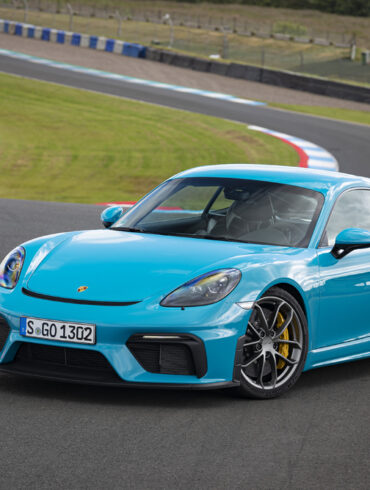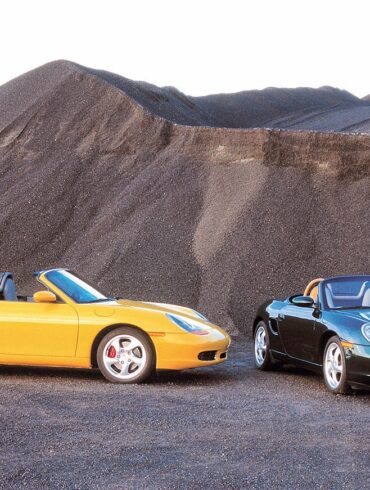The most basic version of the Porsche 911 Carrera has now been unveiled. Porsche chose to detune the twin-turbocharged flat-six engine and downgrade some of the chassis components. These cars offer very good performance and driving dynamics for a slightly lower price. While marginally larger and heavier than the 991-generation model it replaced, the 992 is also more advanced. Power climbs by 15 bhp from the 991 Carrera, to 379 bhp @ 6500 rpm, which is more than enough horsepower for the street.
Porsche 911
The Ultimate Guide To the Ultimate Sports Car
Brief History / Current 911 Lineup / 911 Generations / Every 911 Model Ever
The 911 Generations & Brief History
The Original 911 (1963 - 1973)
The Porsche 911 was introduced to the world in the fall of 1963 at the Frankfurt Motor Show. It was developed as a replacement for the highly successful Porsche Model 356. The original air-cooled, boxer-engined 911 was in production from 1964 through 1989 (the original F-Body cars and then the G-Body cars).
We all know the 901 story don't we? A prototype of the 901, as it was called for a brief period, was unveiled at the Frankfurt Motor Show. Production slowly started in September 1964 and the 901 was shown at the October 1964 Paris Motor Show, barely one month after the start of production. Peugeot objected to the model number, saying that it had the rights to three-digit model numbers with a zero as the middle digit. Although this would only apply to sales in France, Porsche decided to just add a “1,” creating the 911. There were about 80 cars built and labeled 901 before the change.
It was decided to use the lower-cost 356 engine in the new 911 body and call the resulting model the 912. This was successful to the point that the 912 outsold the 911 two to one for a couple years. The last year for the 912 in this form was 1969. The first edition of the 911 was built around a 130 hp, 2.0 liter, flat-six, air-cooled, rear-mounted engine. In 1966 the beefier 160hp 911S was introduced as the first variation of the 911. The "S" which stood for "Super" boasted performance upgrades and modifications that included larger valves, a higher compression ratio, better porting and larger carbuerator jets. Along with the mechanical tweaks, the 911S also received chassis upgrades in the form of a rear anti-roll bar, Koni shocks, distinctive 5-spoke Fuchs alloy wheels and ventilated disc brakes. This really marked the beginning of the 911 as a genuine performance car. This was also the first year for the Targa.
For 1969 Porsche made the single biggest change to the 911 thus far by lengthening the wheelbase 2.5 inches to reduce the oversteer characteristics inherent to rear-engined cars. Pre-1969 cars are often referred to as the short-wheel base cars (SWB) and 1969 onwards called the long-wheelbase cars (LWB). In LWB cars, two 12-volt batteries were installed in each front corner in a further attempt to improve the handling, instead of the earlier bumper-weight solution. They also expanded the model range to three versions, which now included T, E, and S. The E and S got a new induction system in the form of mechanical fuel injection (MFI) to meet emission standard. The next two years, 1970 and 1971, can almost be taken as one step, since there were almost no differences in that time frame. The three model variants, T, E, and S, remained, but the 912 was dropped. Engine displacement was increased to 2.2 liters, the E and S retained mechanical fuel injection, and the T still met emissions with carburetors.
1972 and 1973 can also be taken as one group because there were very few changes from year to year. 1973 marked the end of the longhood 911, when, in 1974, the design of the original body style was changed in order to meet new bumper crash standards. The 1972 and 1973 engine displacement was increased again to 2.4 liters to gain back some power lost from compression ratio reductions to meet the new lower-octane lead-free fuel.. The Type 915 transmission was a totally new design. It was stronger and had a more user friendly H pattern for the first four gears, instead of the old dog-leg first gear that was down and to the left. 1972 was also the first and only time to date where the oil tank was mounted ahead of the right-rear wheel (other than the few 911Rs in 1967 and 1968) for weight distribution reasons.
We can't talk about the classic 911 without mentioning the most famous 911 of all. The 1973 911 Carrera RS was built largely to homologate the faster 911 RSR race car for GT racing and it may be the purest 911 ever made. It is still the GOAT.
Porsche 911 G-Body (1973 - 1989)
The Porsche 911 G model was a true perennial and was built for a full 17 years. During this time, engines were built with 2.7, 3.0 and 3.2 liters. The narrow G-model (from 1974 to 1977) over the 911 SC, the Carrera 3.0 to the Carrera 3.2 gave it a large variety of variants, colors and equipment. The G-Body saw the introduction of impact bumpers to conform with low speed protection requirements of U.S. law, these bumpers being so successfully integrated into the design that they remained unchanged for 15 years. In 1974 the engine size was increased to 2,687 cc, giving an increase in torque. The use of K-Jetronic CIS Bosch fuel injection in two of the three models in the line up - the 911 and 911S models, retaining the narrow rear wings of the old 2.4, now had a detuned version of the RS engine producing 150 and 175 bhp (110 and 129 kW) respectively.
Ten years after the car made its premiere, the Porsche engineers gave the 911 a comprehensive makeover. Known as the 'G-model', the new generation 911 was built from 1973 to 1989 – a longer period than any other. A particular feature of this evergreen was the striking bellows-style bumpers – an innovation created in order to comply with the latest US crash test requirements. Three-point safety belts fitted as standard and seats with integrated headrests also provided increased occupant safety. A further milestone in the car's history came in 1974, when Porsche brought out the first 911 Turbo with a three-litre engine, 260 hp and a striking rear spoiler. With its unique combination of luxury and performance the 'Turbo' became a synonym for the Porsche brand. In 1977 came the next performance level: the 911 Turbo 3.3 was given a charge air cooler and at 300 hp was the highest performance car of its class. On the naturally aspirated side the 911 Carrera re placed the SC in 1983 and, having an engine capacity of 3.2 litres and 231 hp, became a much loved collector's piece. Lovers of fresh air were able to buy this 911 as a convertible from 1982. In launching the 911 Carrera Speedster in 1989, Porsche was building on a legend.
Engineers searching for the "ideal charge" – optimum combustion of the air-fuel mixture – is almost as old as the combustion engine itself. The technicians aim to get as much air as possible into the cylinders so that, when it is compressed and mixed with fuel, it can create a high operating pressure and therefore high output by means of combustion. The 911 Turbo, presented in 1973, was a forward-looking study as its 3-litre turbo engine boasted charge pressure control on the exhaust side which had previously been thoroughly tested in the motor racing sector. With the 911 Turbo, which was ready for series production in 1974, Porsche was the first car manufacturer to successfully adapt the turbocharger to the various driving states. Instead of the conventional intake-side control, the company developed exhaust-side charge pressure control. This prevented unwanted excess pressure during partial load or overrun by guiding excess exhaust gases via a bypass instead of through the exhaust gas turbine. When charge pressure was needed again during an acceleration phase, the bypass valve closed and the turbine could work to its full capacity in the exhaust stream.
In 1975, Porsche responded to the issue of corrosion with emphatic success. The 911 was the first series production car to be given a body which was galvanised on both sides – allowing Porsche to offer a six-year corrosion warranty which was extended to seven years for the 1981 model year and then later to as much as ten years. The treated body-in-white not only improved the service life but also vehicle safety as the process preserved the overall rigidity and the crash safety characteristics of the body, despite vehicle aging. It plays a part in the reputation of the 911 as being an extremely durable vehicle – two thirds of all the 911 cars ever built are still licenced for road use today. Extensive tests were carried out before the body was launched for series production. This included trials with stainless steel as the body material – three shiny silver prototypes were made from this material, one of which can be seen today at the Deutsches Museum in Munich. However, the engineers decided not to use stainless steel but to galvanise the body-in-white as this was easier to produce. Driving the prototypes through a bath of salty water to test the resistance to corrosion is a legendary part of the test course in Weissach.
Porsche 911 964 (1988 - 1994)
In 1989 Porsche came out with the 911 Carrera 4 (964). The new 911 was a contemporary take on the classic two-door sports car and came at a time when many were predicting the end of the 911 (the company was producing the 944 and working on the upcoming 968). The long run of the previous 911 meant the 964 needed a major update and Porsche delivered on that promise with 85% new components and virtually none of the predecessor’s architecture used.
Save for the introduction of aerodynamic polyurethane bumpers and an automatically-extending rear spoiler which replaced the “whale tail” found on the 911 throughout the 1980’s, externally, the 964 kept the same style as the classic 911. The interior was an almost entirely reimagined Porsche 911 with more modern design that was intended to blend performance with comfort. The new 911 featured many creature comforts that had been lacking in earlier versions of the car including a Tiptronic automatic transmission, power steering, dual front airbags, dual-mass flywheel, ABS, retractable rear spoiler and twin-spark ignition.
The 964 rode on a completely redesigned chassis with rear suspension switching from torsion bar to trailing arms with Porsche’s “Weissach” rear axle, which added self-steering elements to reduce the chance of oversteer. It featured a naturally aspirated 3.6 liter boxer engine that produced an impressive 250 horsepower. It was the introduction of an all-wheel drive Carrera 4 model that really captured the attention of the automotive community as a whole. The fully mechanical all-wheel drive system was revolutionary for its time, sensing wheels slippage and automatically transferring power elsewhere, ensuring that the driver could maintain a greater degree of control whenever the driving environment became less manageable.
Porsche 911 993 (1993 - 1998)
In 1993 the Porsche 993 Carrera was presented to the general public as the successor for the 964. The Porsche 993 was the fourth generation of the Porsche 911 and easily the most loved iteration and the last of the aircooled Porsche 911s. It was more sophisticated and durable than the Type 964 that came before it, the significant technical advances in the underpinnings created a more civilized car and a greatly improved handling experience too. The 993 retained the 3.6 L m64/01 engine from the 964 but it was re-designated as M64/05.
The work on the Type 993 began in 1989 when design work started on the 964's successor. Tony Hatter was in charge of the design team that would take the 964 design, revise the flow and shape, and release the refined and balanced 993 to immediate acclaim. It was (and still is) the prettiest 911 design ever. This new design featured the iconic 911 silhouette but showcased a more unibody design comprised of updated exterior panels, a lowered stance, more flared wheel arches, and fully integrated smooth front and rear bumper designs. The now steel body shell was wide-styled to accommodate a new multi-link suspension. The car became lower and the new elliptic headlamps, as well as fully integrated bumpers gave the 993 a fresh look, without losing the identity of the 911.
The 993 Porsche 911 Carrera was introduced in Coupé and Cabriolet form in 1994. The Targa version followed for the 1996 model year. A year later came the Carrera 4, again in both Coupé and Cabriolet body styles. The Targa variant came in 1996 and featured an all-new retractable glass roof. The 993 Turbo coupe was introduced in 1995 and featured wider rear wheel arches, a fixed wing in the rear that housed the intercoolers and revised front and rear bumper moldings. It also got 408 bhp from its 3.6 liter twin turbo flat 6. The 993 Turbo S was offered in 1997 as a high-spec model and got 424 bhp. The model 993 Carrera 4S and Carrera S were offered in 1996 and 1997 respectively. Both models got the Turbo-look wide body and lower stance but were much like the standard Carrera internally. In 1995 and 1996, Porsche offered a 3.8 liter, 300 bhp, lightweight variant called the Carrera RS. This version was outfitted with a stationary rear wing, front flaps and 18-inch aluminum wheels. The interior featured racing seats, basic Spartan door panels, no rear seats and minimal noise reduction effort. The model Carrera RS Clubsport, a further variant of the RS, was a more extreme version with welded roll cage, a deeper chin spoiler and a larger rear wing. The top of the 993 range was the GT2 (initially sold as the 911 GT). It was Porsche's twin turbo track star, built for the road to meet homologation requirements. Due to the rules passed by the racing sanctions, all-wheel drive cars were prohibited from competition, consequently the model GT2 was only available in a rear-wheel drive version. It first arrived in 1995 with a 3.6 liter twin turbo engine and 424 bhp. It got a nice upgrade in 1998 and power was increased to 450 bhp.
While the GT2 and other special variants were rare, it is worth mentioning the super-rare variants of the model 993, both never officially offered for sale. The Speedster, with a lower profile and custom interior, and the Turbo Cabriolet powered by a single-turbo 3.6L engine boasting 360 hp. Only two Speedsters were built by the factory, the first was a dark green model built in 1995 for Ferdinand Porsche himself in celebration of his 60th anniversary, and the second, a silver model that was originally delivered to actor Jerry Seinfeld as a Targa version and sent back to Porsche-Exclusive to be converted to a Speedster. Fourteen Turbo Cabriolets were built by the factory in 1995 before the introduction of the Turbo coupe and could be purchased for 62% above the cost of a standard model 993 Cabriolet. Interestingly, these Turbo Cabriolet cars got 964 underpinnings and drivetrains.
The 993 Porsche 911 was a strong seller too. In all, almost 70,000 cars were produced from 1994 through 1998. The top seller was the Carrera Coupe with 23,127 units made, followed by the Cabriolet version at 15,499 units. The Carrera 4S sold 6,948 units while the Carrera S sold 3,714 units. The base Turbo sold well at 5,978 units while the Carrera RS was rarer with just over a thousand units sold.
Porsche 911 996 (1997 - 2005)
The introduction of the 911 Model 996 in 1998 ushered in a whole new era for Porsche. Gone was the air-cooled flat six, replaced with an all-new, modern, water-cooled flat-six. The 996 911 was the first redesigned 911 model that didn't carry over any significant components from it's predecessors, significant for Porsche at the time as it was known to iterate on the original 911 formula and technology. The 996 was a big deal. It was totally revamped from the inside out.
In 1998, the 996 was only offered in coupe and cabriolet versions with either rear-wheel or 4-wheel drive. The Turbo variant appeared in 2001 and came well equipped with a 3.6 L Turbocharged Flat 6 (M96/70), good for 415 bhp @ 6000 rpm and 415 ft lbs @ 2700 rpm. 0 to 60 mph was over in 4.0 seconds flat and top speed was almost 190 mph. Two years later, in 2002, the X50 option became available on the Turbo model boosting it's power to 450 hp. The model 996 Turbo S came in 2005 and got 450 hp and was available in both coupe and cabriolet.
All of the standard models received a minor makeover in 2002 (becoming known as the 996.2 cars), which included Turbo-style headlights, a freshly designed front clip and an increase in engine capacity to 3.6L along with a subsequent 20 hp boost. The bodies were more rigid which further improved handling and safety and the lower, stiffer X74 suspension became available as a factory modification. The model Carrera 4S, more commonly known as the C4S, was introduced in 2002 as well. The C4S was clad with the wide body look of the Turbo and also shared it's brake and suspension set-up. Production of the Targa began in 2002.
Two lightweight GT variants were produced using the model 996 platform. The GT2 variant was put on hold for two years while Porsche focused on the new model GT3. The model GT3 was produced in two versions, both of which were stripped of most of their luxuries and geared more toward performance. The first version, the model Mk.I GT3, was released in 1999 but was never available in the United States. It was powered by a 3.6L flat-6 engine that produced 360 hp. The second version, the Mk.II GT3, was available to the United States market and featured better aerodynamics along with a more powerful version of the 3.6L which produced 380 hp.
The new model GT2 finally arrived in 2001. It was developed primarily as a road car in contrast to it's counterpart, the track-oriented GT3. The model GT2 sported wider fenders to accommodate bigger wheels and tires, a more aggressively angled nose and a large, fixed rear wing. The heart of the beast was a re-tweaked version of the model 996 Turbo's 3.6L twin turbo engine. Larger turbochargers and intercoolers, upgraded intake and exhaust and re-programmed control software resulted in a 489 hp adrenaline rush that could take you from 0-60 in under 4 seconds and carry a top speed of 198 mph.
Two Special Editions of the model 996 were released during it's production. The first was introduced as "The 911 for the Millennium". It was based on the model 911 Carrera 4 coupe and finished in Violet Chromaflair paint. Only 911 were produced, and each one is distinguishable by unique badging on the engine lid and a numbered plate on the center console. The second Special Edition was released in 2004 to celebrate the 911's 40th anniversary. The Anniversary Edition was loaded with extras and was only available in Carrera GT Silver. 1,963 cars were built to
Porsche 911 997 (2004 - 2011)
On May 7, 2004, Porsche announced that the new 911 generation will come as a 2005 model, as a successor to the 996 model. The 997 ended up being the most commercially successful 911 of all time, selling over 200,000 units during its production run. It marked the return to the classic 911 styling after the 996's "fried egg" look. Today many consider it the quintessential 911 design and the last of the pure 911 sports cars. Some 45 iterations of road cars in total were made but the 997’s significance should not be measured purely on its commercial success. This was a milestone car for successfully introducing the dual clutch PDK transmission to Porsche’s 911, and also Porsche’s now ubiquitous and ingenious active suspension management or ‘PASM’.
The 997 represented a significant relaunch of the 911 that included a major body restyling and interior update, while using much of the rolling chassis of the outgoing 996. At launch there were two uprated versions of the water cooled Carrera engines - the Carrera 3.6 and the Carrera S 3.8. As with all new 911s, both offered a better package than the previous models and the restyle in particular gave the 997 a more classic attractiveness that was arguably missing on the 996. The headlamps were round again, the body more curvaceous and the interior completely new. The Porsche Communication Management (PCM) screen became standard. The new Porsche Active Suspension Management (PASM) was standard on the S version and optional for the base 911. Pressing the "sport" button made the PASM shock absorbers firmer. The 997 Carrera came with 18" wheels and the 997 Carrera S with 19". At the back, the Porsche 997 can be identified over its predecessor by the centre of the rear bumper sitting higher than the bottom of the taillights. As with the outgoing 996, the 997 was offered with narrow and wide-body specification. The additional width reserved for the all-wheel models, including the range-topping Turbo (except for GTS variants that came in 2011).
Two versions were available from the launch, the Carrera with a 325hp 3.6 and the 3.8 S with an extra 30hp. The Carrera was good for 0-62 in 4.8 seconds and 177mph, the Carrera S dropping the sprint time by two tenths and extending the top speed to 182mph. Porsche bolstered the range with Carrera 4 models and a Targa, which arrived later in 2004 with a 44mm wider rear track. A six-speed Tiptronic automatic was also added to the options list at around the same time in 2004, supplementing the standard and newly developed six-speed manual. The Cabriolet models did not have the hardtop included (as did the 996), and offered a fully electric deployment of the roof. The Targas had the glass panoramic sunroof and offered an airy cockpit feel with a very useful opening rear tailgate. The Turbo was added to the 997 line up featuring a twin-turbocharged 3.6 Mezger engine producing 480 bhp. For Gen 2 models engine capacity was raised to 3.8 and power jumped up to 530bhp for the Turbo S. The Normally Aspirated 997 GT3 also joined the ranks for 2007 with a track-focused set and generous 415 bhp on tap. The hardcore GT3 RS kept the same power but skimmed an additional 20kg of the overall weight of the car.
This specification remained largely unchanged for the cars built until June 2008. Now referred to as Gen 1 cars, they were replaced by the Gen 2 For 2009 MY production the 997 was revised and whilst still retaining the 3.6 and 3.8-litre displacement, the engines themselves were changed from the faithful Mezger type to a DFI unit (Direct Fuel Injection) with the power increased to 355 BHP and 385 BHP respectively (circa 500 BHP for the Turbo). Other changes included some minor body tweaks to the bumpers, wheel designs and wing mirrors as well as introducing LED front running lights and LED rear light units. Porsche also introduced an all-new seven-speed PDK dual-clutch automatic in place of the Tiptronic. The new transmission and changes to the engines improved economy and power, increasing the 3.6's output to 345hp and the S model to 385hp. The GT3 gained a further 20bhp and the RS now 25kg lighter boasted 450 bhp by the time the 997.2 version came around.
But there was more to come, naturally. During the course of the 997’s life, Porsche also offered its usual array of higher performance and limited edition models. By the end of production, the second generation 997 Turbo S was making some 523bhp, good for 60mph in a fraction over three seconds and very nearly enough to pass 200mph. Meanwhile, the motorsport department in Weissach were making hay with the GT series, producing even more polished versions of the GT2 and GT3 in both regular and ‘RS’ guise. The GT cars were absolutely perfect. Porsche’s 911 GT2 RS was a lightweight, twin-turbocharged, 620-hp bout of madness that stemmed from Stuttgart’s quest to see how high up the sports-car ladder the 911 could punch. It is the most serious roadgoing Porsche ever. The result is 620 hp at 6500 rpm and 516 lb-ft of torque at 2250. It gets a six-speed manual gearbox and rear-drive only. The highlight of the 997 range however was the less powerful GT3 RS 4.0. The headline power figure and the ability to rev to 8,500 snare your attention, but the most staggering aspect of this engine is actually its tractability. Mid-range lunge is marvelous, even if the peak number of 339 pound-feet doesn't sound huge in the context of short gear ratios, lightweight, and a compact frontal area. In third gear, the way this thing flies between 4,500 and 8,500 rpm is scintillating. This is one special car.
Porsche 911 991 (2012 - 2018)
The Type 991 911 series was the seventh generation of the iconic 911. The 991 generation models were unmistakably 911 in looks and design philosophy, but the 991 was really the ultimate evolution of Porsche 911s becoming highly technical, high quality and well built machines. Quality improved and the technology jump finally vaulted Porsche to the top of the automakers in terms of building the best cars on the planet. The Type 991 represented the most technically advanced 911 model to date and the 991 looked more powerful than any other 911 before – an effect that was heightened by the wider track and a stretched wheelbase. It also featured adaptive aerodynamics: the 911 was the first series sports car from Porsche to adopt this technology from the 918 Spyder hybrid super sports car.
On the inside, the 911 ranges got a more modern design and enhanced ergonomics with higher quality materials. At the same time, the new Porsche Communication Management (PCM) was introduced with improved connectivity, multitouch monitor and real-time traffic information (it was updated thoroughly in 2017 with the 991.2 update also). The 991 911 was more athletic and more powerful than ever before. The lightweight body in aluminium-steel design was again more rigid and helped to reduce the weight by over 90 pounds. The 991 was also the Porsche 911 that cemented the "lots of variants" approach for Porsche, with over 20 variants produced for every niche you can imagine. Commercially, the 991 was a huge success, with Porsche selling 233,540 units from its production in 2011 till the last one rolled off the production line in December 2019.
The 991.1 generation cars launched as MY 2012 cars. The 345hp 3.4 liter Carrera and 400hp 3.8 liter Carrera S launched first, in both Coupe and Cabriolet bodystyles and could be had with either rear and all-wheel drive drivetrains. The 991s all got electric power steering which took away some of the feel we were used to. The Carrera S got PASM standard (optional on the Carrera). The new Turbo (in coupe and cabriolet) came out in 2013, now with a whopping 512hp 3.8 liter twin-turbo powerplant and absurd performances. The Targa 4 and Targa 4S launched as 2014 MY cars, this time with the traditional "targa" roof and the best open/close automated dance in the business. The pick of the "regular" 911 range has to be the GTS models (available in lots of configurations), designed to fill the gap between the Carrera S and the track focused GT3, with their own look and feel and all the right options out of the box. Truly special.
For the 2016 model year, the 991 evolved into its second generation. The updated Porsche 911s (referred to as 991.2 or 991 II) introduced new styling including updated front and rear bumpers, new dual exhaust pipes along with new head and tail lights and options, along with all new, 3.0-litre twin-turbocharged flat-six engines across the range. Marking the first time the base 911 models had turbocharged engines. Despite the engines smaller capacity and turbos, it was a useful 30hp increase for the Carrera and 20 hp for the S models and even bigger jump in torque. The change to turbo power also delivered better fuel consumption and lower CO2 emissions, with the only downside being the loss of that glorious naturally aspirated scream.
As expected we saw a lot of special 911s during the 991 generation, as both 991.1 and 991.2 models. The 469 hp 3.8 liter GT3 was groundbreaking but had some technical issues after launch. The 500 hp 3.8-litre GT3 RS took that glory to a whole new level on track. Controversially, both the GT3 and GT3 RS were only available with PDK transmission and rear wheel steering. Porsche fixed this with the 991.2 updates, making the GT3 available with a manual gearbox and even more excitingly, offering us the GT3 Touring option, which removes the wings and made the GT3 a stealth street monster. Perhaps the most interesting 911 generation car was the 911 R, a special edition car that shared most of its underpinnings with the GT3 RS, but does not include the roll cage, rear wing, and associated bodywork for a weight saving of 110 lb. The 911 R comes only with a 6-speed manual transmission and it was one of the most special 911s we have ever driven.
The Porsche 991 was titled World Performance Car 2012 shortly after famed Porsche designer Ferdinand Alexander Porsche died. The GT3 was awarded the title of World Performance Car Of The Year in 2014.
Porsche 911 992 (2019 - Present)
"Faster, more emotional, and more connected" is how Porsche described the eighth generation Porsche 911 in their press release on November 27th 2018. We loved the design, harking back the 993-generation car. The front lid now has the groove in the middle (not so embossed as on the 993, but still) and the lid's front edge is straight, not curvy as it has meanwhile been on the 997 and 991 generations. While the 992 got good design stuff from the 993, its overall stance - its proportions and size - are naturally closer to the 991. The curvy shape of the fenders, especially at the back, is closer to the 993 than ever before. Interesting fact is that the 992 is the first 911 designed completely under Volkswagen.
Compared to its predecessor, the 992 is wider and now uses aluminium body panels. The 992 also has a new rear bumper with larger exhaust tips than its predecessor. While the 992's rear end width stayed the same as on the widebody 991, at the front, the body width was increased by 1.8"/45 mm, making room for the wider front track. The wider rear end is also standard across the entire range. That is really good news for the people who prefer sports cars with rear wheel drive, but at the same time want the wide body look.
The next generation of flat-six turbocharged engines has been further developed to be more powerful than ever. There are numerous revisions and tweaks to the powerful turbocharged engines of the 992 Porsche 911 generation that are worth mentioning. A larger central intercooler is found at the rear, replacing the twin intercooler units of the 991 generation. This change results in a 12% larger size that allows for lower intake-air temperatures. Better-flowing exhaust manifolds also help power delivery on the 992. Engine compression ratios have increased from 10.1:1 to 10.5:1 while maintaining 16-psi of boost pressure. Carrera S horsepower outputs increase from 420 to 450 as a result. Although brake rotor sizes remain the same, the newly optional PBSB (Porsche Surface Coated Brake) system helps enhance braking performance. The 992 engine has the compulsory particulate filter which adds around 10 kg/22 lb. The PDK multi-clutch automatic transmission has 8 speeds. The first gear has a shorter gear ratio than before, which better matches lower gears to the turbocharged engines. The 8-speed PDK is 20 kg /44 lb heavier than the previous 7-speed PDK in the 991. Cars with manual transmission come with rear differential lock and Sport Chrono package with automatic rev-match function. When the driver shifts down, this function automatically opens the throttle to increase the engine speed to match the gearbox speed.
The body is constructed to better safeguard the occupants in the case of an accident and is 12 kg/26 lb heavier despite the full aluminium outer skin. The larger wheels are heavier, too. All in all, the 992 with the PDK is approximately 55 kg/110 lb heavier than its predecessor. The new cabriolet roof hydraulics reduce opening time to around 12 seconds and the new engine mounting position makes the cabriolet torsionally more rigid than its predecessor. This allows - for the first time - to offer PASM Porsche Active Suspension Management sport chassis for the 911 Cabriolet. The PASM package lowers the car by 10 mm, the springs are harder, the front and rear anti-roll-bars more rigid.
The interior is completely new, but classic from the first glance. The gear selector is very small and only acts to select forward or backward driving direction. The instrument cluster is similar to the latest Panamera - the central tachometer gauge is accompanied with digital screens on the left and right. The touchscreen now has a diameter of 10.9". The car is permanently connected (while the GSM network is available) and the online navigation system is based on swarm intelligence. The new optional lightweight laminated noise-insulating glazing offers a weight advantage of around 4 kg/9 lb.
As expected, Porsche launched the Carrera S and 4S first and then we saw the rest of the lineup trickle in over the following 12 - 18 months. In 2021, we saw the full GTS lineup announced and the 911 GT3 (now with a dedicated GT3 Touring model). The lineup has never looked better and we cannot wait to see the rest of the special editions get rolled out in coming months.
Current Porsche 911 Lineup
The 2022 Porsche 911 is nearly perfect. It has all the luxury items you come to expect with a pricey car and it has more than enough performance to satisfy anybody. The problem for any buyer of course, is that there are so many 911 variants on sale today that knowing which one to choose is really hard. Depending on the "regular" variant you choose, you get between 379 and 473 horsepower. The base car is fast enough, but we would choose the S since we love the extras. For 2022, the GTS trim level joins the 911 family. Along with a 473-hp version of the lineup's ubiquitous twin-turbo flat-six, it's available with an eight-speed automatic or seven-speed manual transmission and rear- or all-wheel drive. The GTS is offered in all three body styles, too. Its most notable features include a specially tuned suspension as well as 20-inch front and 21-inch rear wheels with black center locks as seen on the 911 Turbo. To celebrate 50 years of Porsche Design, a limited number (750) of special-edition 911 Targas will be offered.
Porsche 911 Generations
The Porsche 911 was developed as a much more powerful, larger, more comfortable replacement for the Porsche 356. The new car made its public debut at the 1963 Frankfurt Motor Show. The first generation is referred to as the F-Body or F-Series cars. The G-series was only produced for the 1974 model year, and was followed by the H, J, K, and so on. We refer to them a "G-Model" or "Second Generation 911s" because they are all new bumper designs. In March-April 1984 the future 911 Carrera was internally designated as project 964 and the successor to the 911 Turbo as project 965. Although the 964-generation 911 didn't look very different compared to the previous G-model 911, the 964 was a new car in many ways. The Porsche 993 was manufactured and sold between January 1994 and early 1998 and it's discontinuation marked the end of air-cooled 911 models. The 996 generation was next, and it was the first all new chassis platform since the original 911 and the introduction of an all-new, water-cooled flat six engine. The 997 was an evolution of the preceding 996, with the most significant changes being interior and exterior styling, the most notable being the replacement of the "fried egg" headlamps. A new S version was offered, with additional power from a slightly larger engine, sports suspension, and sports exhaust. The 2012 model 911, internally (and confusingly) called the 991, was introduced at the IAA Frankfurt on September 15, 2011. The Porsche 992 was the internal designation for the eighth generation of the Porsche 911 sports car. Introduced at the Porsche Experience Center, Los Angeles on November 27, 2018, the 992 generation was larger, faster and more digital.

Porsche 911 (F-Body) (1st Gen) Special Models
There were several motorsport and special edition 911s in the first generation. The 911R was a very limited production racing version of the 911 whose concept would ultimately set the standard for GT racing domination for the next 40 years. The first 4 prototypes surfaced in the spring of 1967. Most famously, the Carrera RS debuted in October 1972 at the Paris Motor Show. It was the fastest production 911 and a solid race winner. Some feel it is still the best 911 ever built.
Porsche 911 (G-Body) (2nd Gen) Special Models
There were several basic special edition models throughout the second generation 911s lifecycle that were nothing more than design exercises, but there were also some really interesting models too. Following the famous 1973 F-model 911 Carrera RS 2.7, Porsche built its successor based on the G-model and it was called the 911 Carrera RS 3.0. With its new 3.0-liter engine, featuring mechanical fuel injection, it was capable of 230 hp and boy, was it rare, with only 56 made. Then there was the Option M491 which was called the 'Supersport' in the UK, and commonly referred to as the 'Turbo-look'. The M491 option closely resembled the Model 930 Turbo with it's exterior styling that included flared wheel arches and the classic rear spoiler. There was also the 911 Carrera Club Sport, or 911 Carrera CS. A total of 340 of these cars were built and they were built specifically for club racing and included a blueprinted engine with hollow intake valves, a higher rev limit, spartan interiors and zero power options - in an effort to save weight, of course. There was also the Speedster, a 2 seater, low-roof version of the Cabriolet, reminiscent of the model 356 Speedster of the 50's.
Porsche 911 (964) (3rd Gen) Models
After the 964 Carrera 4 was introduced, effectively solving many of the oversteer tendencies of the previous generation, a rear-wheel drive Carrera 2 was added 6 months later. The Carrera 2 was actually the rear-wheel drive version of the car which packed almost the same technical specifications as the base model. In addition to the base model Carrera Coupe, Cabriolet and Targa versions, the 1990 Porsche 911 offerings also included a Type 964 Turbo option. In 1992, the Porsche 911 Turbo was upgraded to a more powerful 3.6 liter power plant delivering 320 horsepower. At the end of 964 production in 1994, the Porsche factory had some 90 Turbo chassis left and created a very special Turbo 3.6 S model with 380 horsepower.
Porsche 911 (964) (3rd Gen) Special Models
Several special edition 964s were made. In 1992 there was the America Roadster which was essentially a turbo-bodied cabriolet for the US market. There was also the Porsche 964 Speedster, based on the 964 Carrera 2 platform. More than three quarters (641) of the 800 built had the “Turbo look” wide-body option. In 1992, Porsche produced a super-lightweight, rear-wheel-drive only version of the 964 dubbed Carrera RS for the European market using their “Carrera Cup” race car as a base. There was also a heavier Touring variant (with sound deadening, power seats (optional), undercarriage protection and power windows) and an N/GT racing variant with a stripped, blank metal interior and a roll cage. A later ultra-limited production version, the Carrera 3.8 RS featured the Turbo body and a 300 bhp, bored out 3.8 liter motor was sold briefly in Europe.
Porsche 911 (993) (4th Gen) Models
The 993 generation was the last in the line of the “classic” Porsche experience for many enthusiasts. The 993 had several variants, as its predecessors, varying in body style, engines, drivetrains, and included equipment. The Carrera was available in rear- and all-wheel drive versions. The Cabriolet, introduced simultaneously alongside the coupé in April 1994 for the 1995 model year, featured a fully electrical and hand-stitched soft top. Porsche also offered the 993 Carrera as an all-wheel drive version called the Carrera 4. The Targa version of the 993 was introduced in the 1996 model year and was the debut of the so-called "greenhouse" system. The 993 Turbo coupé was introduced in 1995. It featured a new twin-turbocharged engine displacing 3.6 liters and generating a maximum power output of more than 402 hp. During the second-to-last year of production of the 993 (1997), Porsche offered the 993 Turbo S, which was manufactured by Porsche Exclusiv department. The most interesting mainstream models introduced during the 993 generation was the Carrera 4 S (1996) and the later rear-wheel drive Carrera S (1997). They both shared the Turbo model's bodyshell, but housed the naturally aspirated engine in the rear.
Porsche 911 (993) (4th Gen) Special Models
Just like its predecessor, the 993 spawned a couple of higher-performance versions. There was the Carrera RS and the GT2. The latter was the first of its kind, kicking off a new twin-turbo flat-six era. The first GT2 was developed as a full-fledged race car for GT2 class racing, but Porsche also created a road-going version for homologation purposes. Powered by a twin-turbo 3.6-liter flat-six rated at 424 horsepower and 432 pound-feet (586 Nm) of torque, it was Porsche's most potent vehicle back then. In 1998, the output increased to an even more impressive 444 horses. The race-spec GT2 was the most radical incarnation of the 993 with its twin-turbo flat-six delivered 450 horsepower and was tweaked for endurance racing. Porsche also created a GT2 Evo version for GT1 class racing that was good for 600 horsepower. The most interesting special model in the 993 range is the 993 Turbo Cabriolet, a limited edition run that actually had a 993 body with 964 Turbo running gear. While the Turbo Cab was rare at 14 units, the 993 Speedster was the ultimate unicorn, with only two units ever produced. The 993 Carrera RS is a lightweight, stiffer version of the naturally-aspirated 993 Carrera meant for ultimate street performance.
Porsche 911 (996) (5th Gen) Models
Manufactured between 1997 and 2005, the 996 split opinion among Porsche purists as it was the first 911 to feature a water-cooled engine. However, it proved a hit with the wider motoring public and worldwide sales figures of over 175,000 made it one of the company’s most popular cars ever. Those sales were split across a cadre of regular model variants that we were used to seeing as well as some ones. The M96 3.4 liters was found in the base Carrera coupe and cabriolet, making 296 horsepower and 258 ft lbs of torque. The Carrera 4 coupe and cabriolet models came next, also powered by the same engine. These models were joined by the hardcore GT2 and the ultra-quick Turbo for the 2001 model year, both equipped with a 3.6-litre, twin-turbocharged and intercooled flat-six engine. All 996s got a major refresh in 2002, along with a bigger engine and the new Targa and Carrera 4S models newly introduced, as well as a visual update. The base engine, now displacing 3.6 liters, was rated at 320 horsepower and 273 ft lbs of torque. The Targa model got a sliding glass "green house" roof system (like it had in the 993) and also featured a rear glass hatch which gave the driver access to the storage compartment. The Carrera 4S was the pick of the standard models, sharing the wide-body look of the Turbo as well as the brakes and suspension.
Porsche 911 (996) (5th Gen) Special Models
For the road we also saw some very special 996 variants. Porsche offered a special edition of the 996 for the year 2000, named the 911 Millennium edition, it was based on the Carrera 4 coupé and had a cool Violet Chromaflair paint and turbo-polished wheels. The "40th Anniversary Edition" was built to celebrate the 911's 40-year history in 2003. It got the 996 Turbo's front-end, and was available only in GT Silver metallic paint and came with the X51 power kit. The GT2 was the turbocharged counterpart to the GT3. It had rear-wheel drive, and a re-tuned version of the 996 Turbo's 3.6 litre, twin-turbocharged engine featuring larger turbochargers and intercoolers. The result was 477 hp and 0 - 60 mph in just on 4 seconds. In 2005, Porsche introduced the Turbo S model available as either a coupé or cabriolet. The Turbo S was essentially a 996 Turbo with the X50 option but also included PCCB, 6-disc CD changer and aluminum-faced instruments. The final special edition worth mentioning it the 996 GT3 RS, a sharpened version of the Mk.2 GT3, built for track use and it was the homologation model for the GT3 race-car. It was the forbidden fruit for the U.S. and Canadian customers.
Porsche 911 (997) (6th Gen) Models
By the time the 997 generation 911 came around in 2005, Porsche was starting to have some more consistency in the core model offerings. There was the Carrera and Carrera S, Carrera 4 and Carrera 4S - all available in both coupe and cabriolet bodystyles. It was followed by the Turbo coupe and cabriolet models. In addition to the coupé and cabriolet versions, Targa versions of the Carrera 4 and Carrera 4S were also available (Targa 4 and Targa 4S), which carried on with the "glass canopy" roof design. During 2009, Porsche updated the 997 line-up including styling changes, a revised engine with direct injection and the introduction of the company's new "PDK" dual clutch transmission. As a result, the updated 997 models were faster, lighter and more fuel efficient than the outgoing versions, with improved handling. In the case of the 997 Turbo, a comprehensively re-tuned all wheel drive system with an optional "torque vectoring" system was also a part of the upgrades package. The 2009 onward models were known as the 997.2 models.
Porsche 911 (997) (6th Gen) Special Models
There was no shortage of special edition 911 during the 997 years. First up was the 911 Club Coupe, a limited (50 units) Carrera S coupé with X51 Powerkit commemorating the 50th anniversary of the Porsche Club of America. Late in generation's run was another Carrera S based stunner called the Sport Classic special, that sold all 250 units in under 48 hours. The first higher performance special was the 997 GT3, a way for Porsche to homologate aero features for racing. It was followed by the GT3 RS, stripped of all luxuries and even more track focused than the "base" GT3. The 996 GT2 was superseded by the 997 GT2, and was the most powerful and fastest road-going 911 ever to have been sold to the public with 523 bhp and 502 ft lbs of torque. The 997 received a mid-cycle refresh in 2008 for the 2009 model year and so did many of the specials. The Turbo S was unveiled at the Geneva Motor Show in March 2010 and the updated Porsche 911 GT3 was unveiled at the 2009 Geneva Motor Show. The 997.2 GT3 got a new 3.8-litre flat-6 engine was now rated at 429 bhp at 7,600 rpm and with a maximum engine speed of 8,500 rpm. The 997.2 GT3 RS followed, with a higher engine power output, lower weight and shorter transmission ratios, as well as having upgraded body and suspension components. The craziest 997 generation special was the GT2 RS. The 3.6 litre twin-turbocharged Flat-6 engine had a crazy 612 bhp and weighed 154 lb less than the outgoing GT2. . The best 997 generation car was the final evolution of the 997, the 911 GT3 RS 4.0. It featured a 4.0-litre engine utilizing the crankshaft from the GT3 RSR with increased stroke dimensions that increased power to 493 bhp at 8,250 rpm and 339 ft lbs of torque at 5,750 rpm.
Porsche 911 (991) (7th Gen) Models
There are too many "regular" 911 models to mention in just this paragraph. In fact, during the 991 911 generation we saw a total of 35 individual models (not including special edition cars). The base Carrera, Carrera S, Carrera 4 and Carrera 4S were all available as both coupe and convertible bodystyles and were made as both 991.1 and 991.2 models. The Targa 4 and Targa 4S are both all-wheel drive and likewise were available in both generations. The Carrera GTS range grew, now with five models (GTS Coupe, GTS Cabriolet, 4 GTS Coupe, 4 GTS Cabriolet and Targa GTS). The 911 Turbo and Turbo Cabriolet continued to sit at the top of the regular range, with an entirely new Carrera T variant making an appearance in 2018 as a refreshingly simple carl with just the basics for a great driving experience. The biggest difference between the 991.1 and 991.2 cars is obviously the change from naturally aspirated engines to the turbocharged flat-six unit, as well as some design tweaks and a much improved PCM and entertainment system. The Carrera T was the only regular model not offered as a 991.1 generation car.
Porsche 911 (991) (7th Gen) Special Models
The special editions is where it gets fun for the 991 generation 911. The anniversary edition was a stunning design exercise coupled with a tasty powerkit fettled 430 hp flat 6. The 991 generation GT3 was immediately polarizing when released thanks to no manual option, yet it still blew away every driver, taking performance cars to a new level (yet again). The Turbo S models continued to wow with their stupid-fast speed and GT-comfort, while the track-focused GT3 RS was still the weapon of choice for the track-rats. The finest 991.1 car though was definitely the 911 R, thanks to its 4-litre naturally aspirated flat-six engine and six-speed manual gearbox. Probably the best 911 of the modern era. For the 991.2 special edition cars Porsche listened to its buyers and released the 911 GT3 with a manual gearbox option as well as giving us the GT3 Touring option (no wings, subtler look, manual only) and a new Speedster model that proved that manuals are just better (always). There was no doubt that the 991.2 GT2 RS was the pinnacle of the 991 generation in terms of sheer performance.
Porsche 911 (992) (8th Gen) Models
The first models to debut were the Carrera S and Carrera 4S. Both models are powered by a 3.0-litre twin-turbocharged flat-6 engine. The Carrera S and Carrera 4S Cabriolet followed a few months later, while the base Carrera and Carrera 4 was introduced in mid-2019. Porsche announced the Targa cars a year later, in May 2020. As expected the Targa models are powered by the 3.0 liter as the Carrera 4 and 4S. All models now have the widebody design so telling them apart is harder than ever. In mid-2021 we saw the full range of the five GTS models announced and as expected they were all well-specced, almost perfect out of the box. The top of the regular model lineup is still the 911 Turbo and Turbo Cabriolet, both with 572 hp and all-wheel drive sure-footedness.
Porsche 911 (992) (8th Gen) Special Models
Introduced in March 2020, the 992 Turbo S and Turbo S Cabriolet were the first special edition 992 generation cars. The Turbo S has a twin-turbocharged 3.7-litre flat-6 engine rated with 640 hp and 590 ft lbs of torque. The engine is based on the 3.0 litre unit found in the Carrera models and has a slightly shorter stroke than that of the outgoing Turbo S engine. Acceleration is insane, with 0-60 mph in 2.6 seconds (2.7 seconds for the convertible) and top speed is 205 mph. Both the turbochargers and the air intake system are larger, with the latter now being located directly behind the engine instead of in the rear fenders as on previous 911 Turbo models. As always, the Turbo S gets lots of added extras included standard versus the "base" Turbo models, including Porsche dynamic chassis control (PDCC), rear-axle steering and ceramic composite brakes. In February 2021, Porsche introduced the 992's GT3 version. It uses the same 4.0 litre naturally aspirated flat-6 as the 991.2 generation, now producing and producing 500 bhp and 338 ft lbs of torque. Porsche spent a lot of time optimizing aero and managing weight. the GT3 features a large rear spoiler with larger air vents, a bigger diffuser, two large exhaust connections, bucket seats in its interior, and an optional roll cage. Porsche also introduced double-wishbone suspension, making the car stiffer and more stable with less body movements under braking. In short, the 992-gen GT3 has stiffer, faster-reacting damping, but with more comfort than before. The 992 GT3 recently set a lap time at Nürburgring Nordschleife with a time of 6:55.34 minutes.
Join Our Porsche Community
Sign up for our weekly Porsche newsletter. The latest Porsche news, rumors, reviews and more delivered to your inbox. Cool Porsche stuff perfect for the flat-six obsessed.



